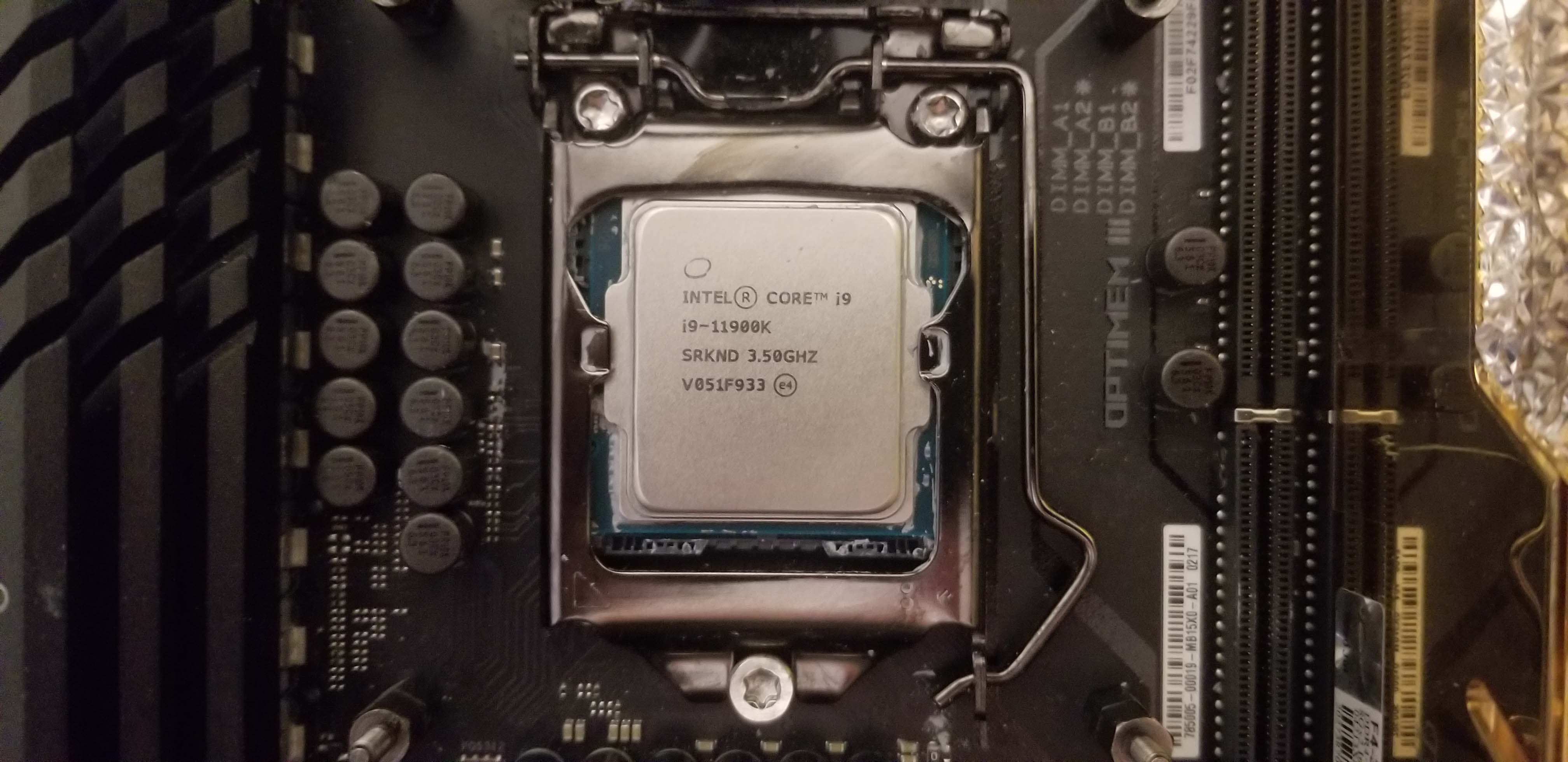Why you can trust Tom's Hardware
Core i9-11900K and Core i5-11600K Application Benchmarks, The TLDR:
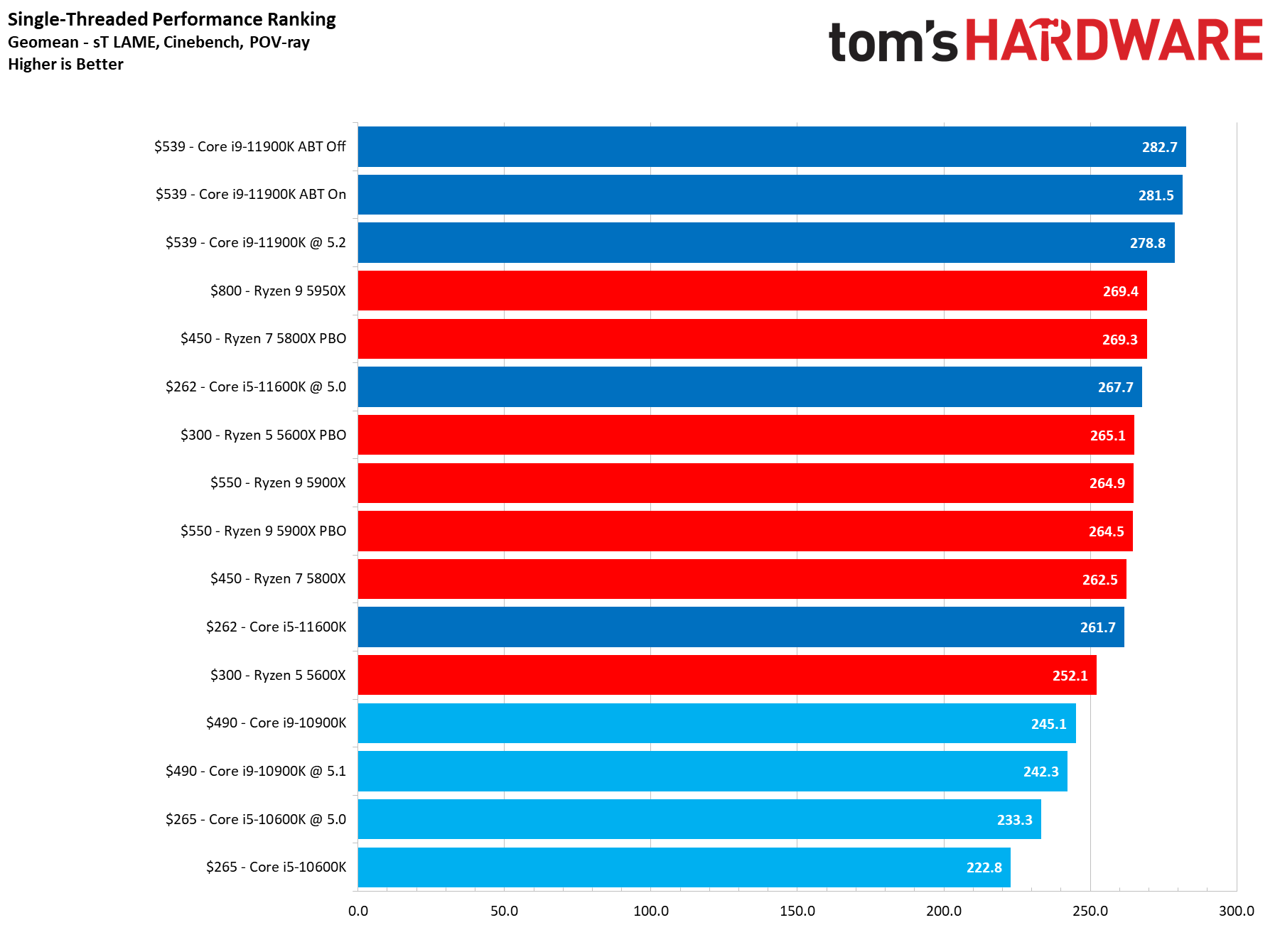
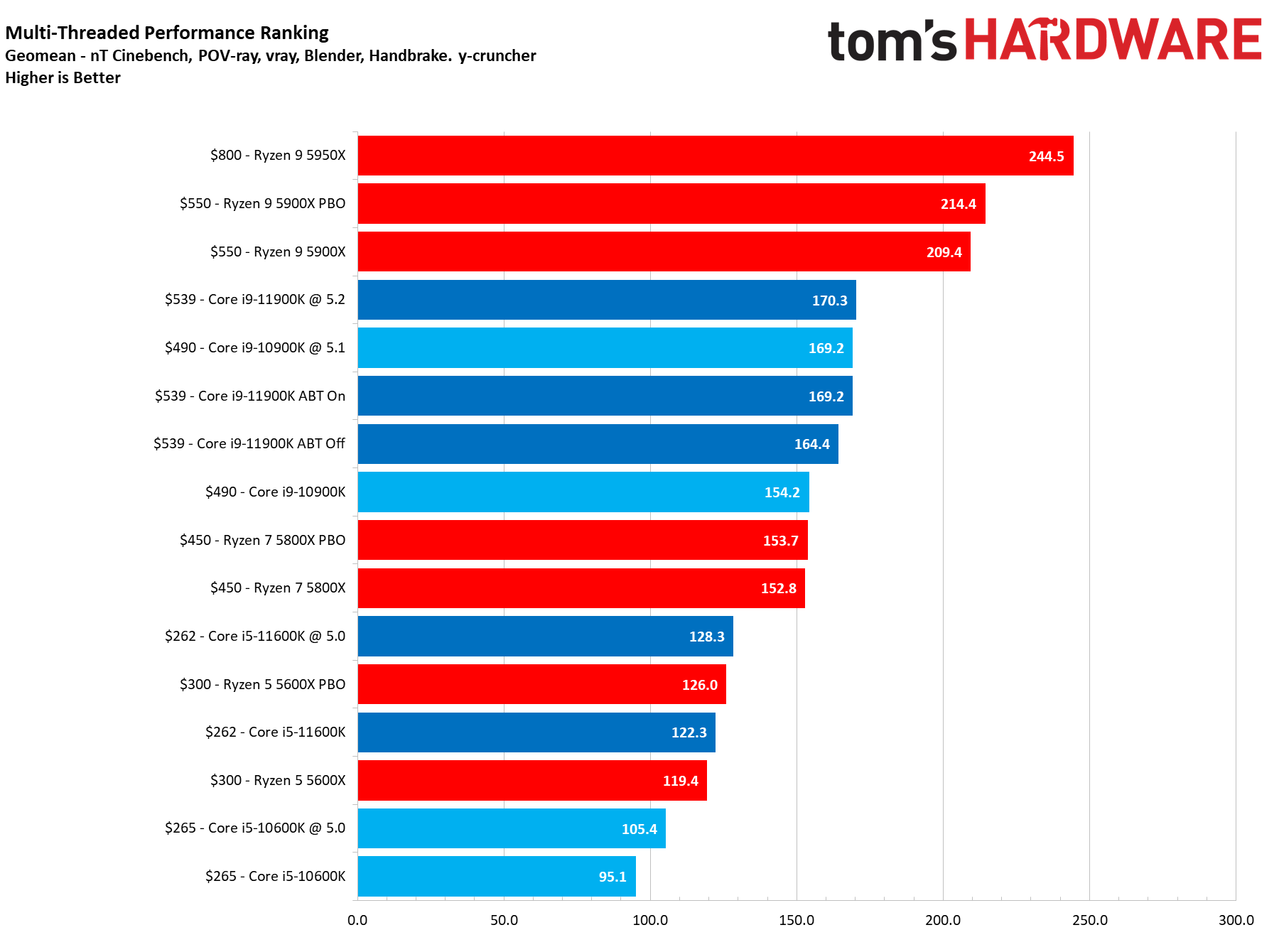
We can boil down productivity application performance into two broad categories: single- and multi-threaded. The first slide has a geometric mean of performance in several of our single-threaded tests, and the Core i9-11900K takes a 6.7% lead over the Ryzen 9 5900X.
You'll notice that engaging the ABT boost actually results in slightly lower single-threaded performance. As we see with AMD's auto-overclocking Precision Boost Overdrive (PBO), that isn't uncommon with auto-tuning approaches that are designed to boost performance in multi-threaded work.
The geometric mean of our threaded application workload results shows that the 5900X's four core advantage equates to a whopping 27% advantage over the 11900K in threaded performance at stock settings, and an equally impressive 26% advantage between the overclocked configurations.
The 5900X's advantage is evident across nearly the full gamut of our threaded benchmarks, with compression and decompression experiencing tremendous uplift on the strength of the 5900X's 12 cores. The 5900X also dominates in rendering workloads, like our various Blender, C-Ray ray tracing, Cinebench R23, and v-ray rendering tests.
Intel does tend to offer better performance in AVX-enabled workloads, granting the 11900K a convincing step forward over the 10900K in the AVX-512-enabled y-cruncher. However, Intel's AVX prowess doesn't equate to big wins in more realistic and common AVX code, like the x264 and x265 HandBrake tests that go to the 5900X in a convincing fashion. The 5900X is also superior in our LLVM compilation and NAMD simulation code tests.
Rendering Benchmarks on Core i9-11900K and i5-11600K
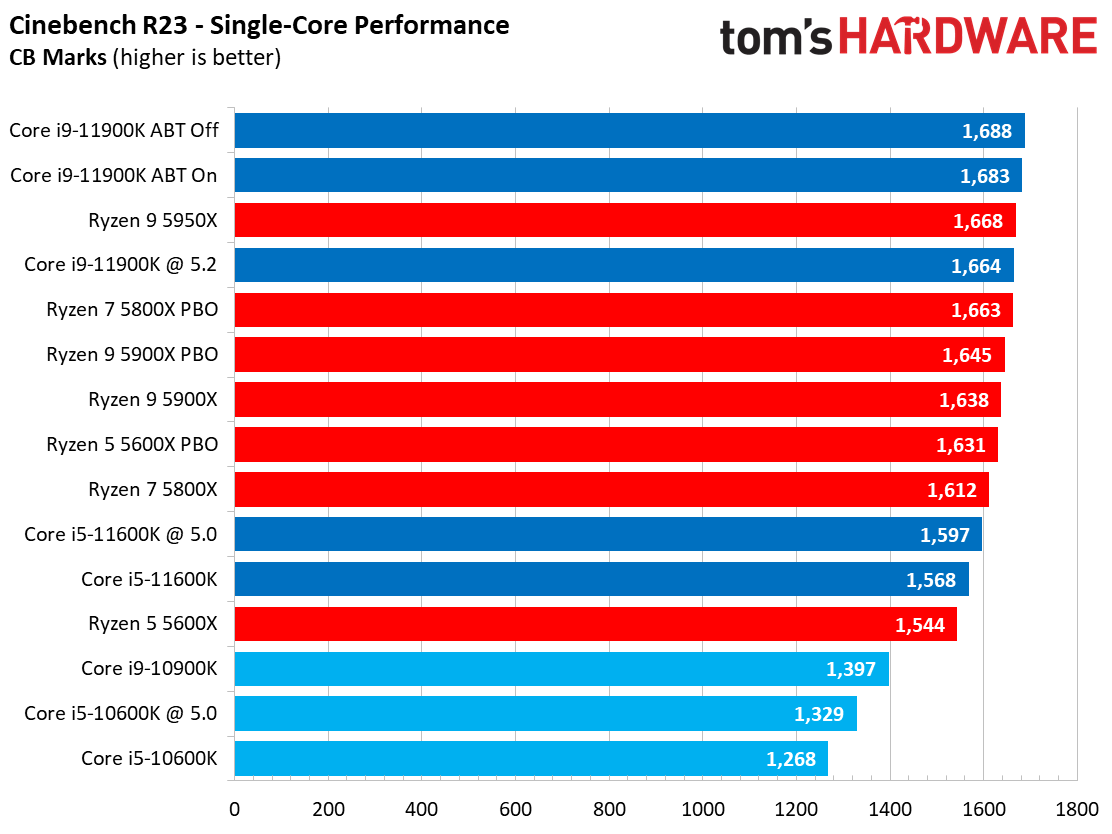
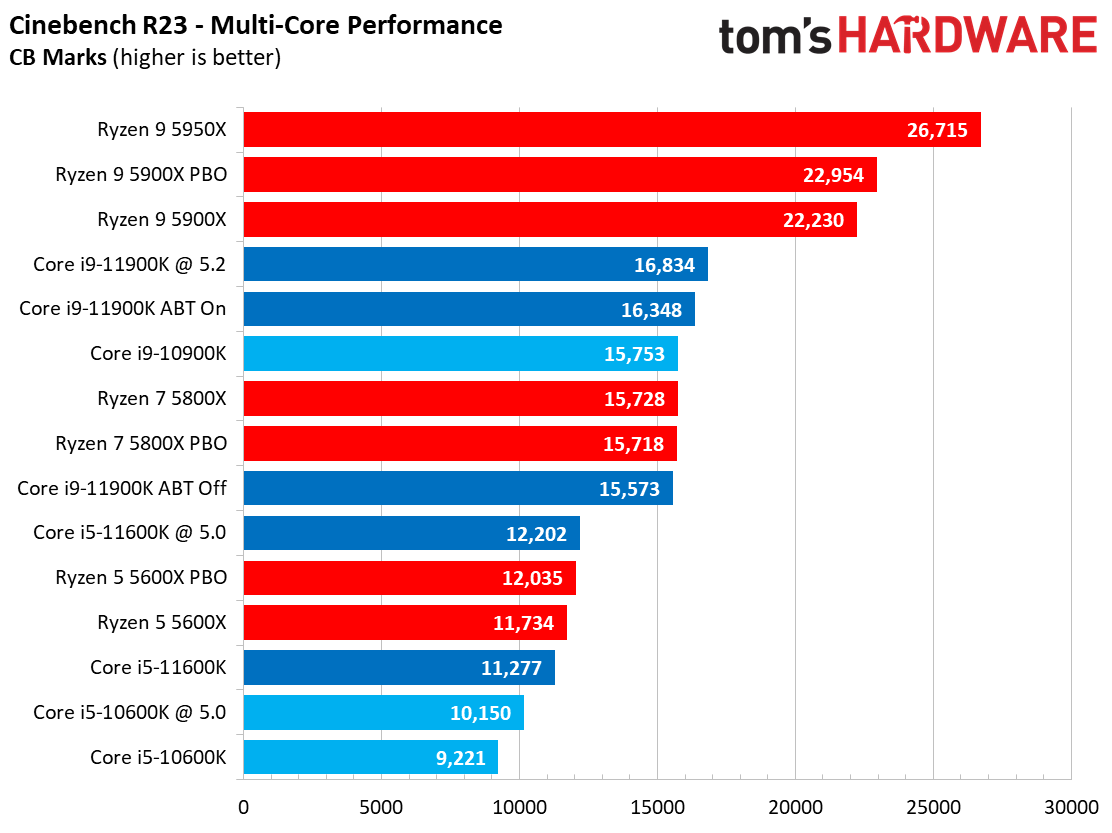
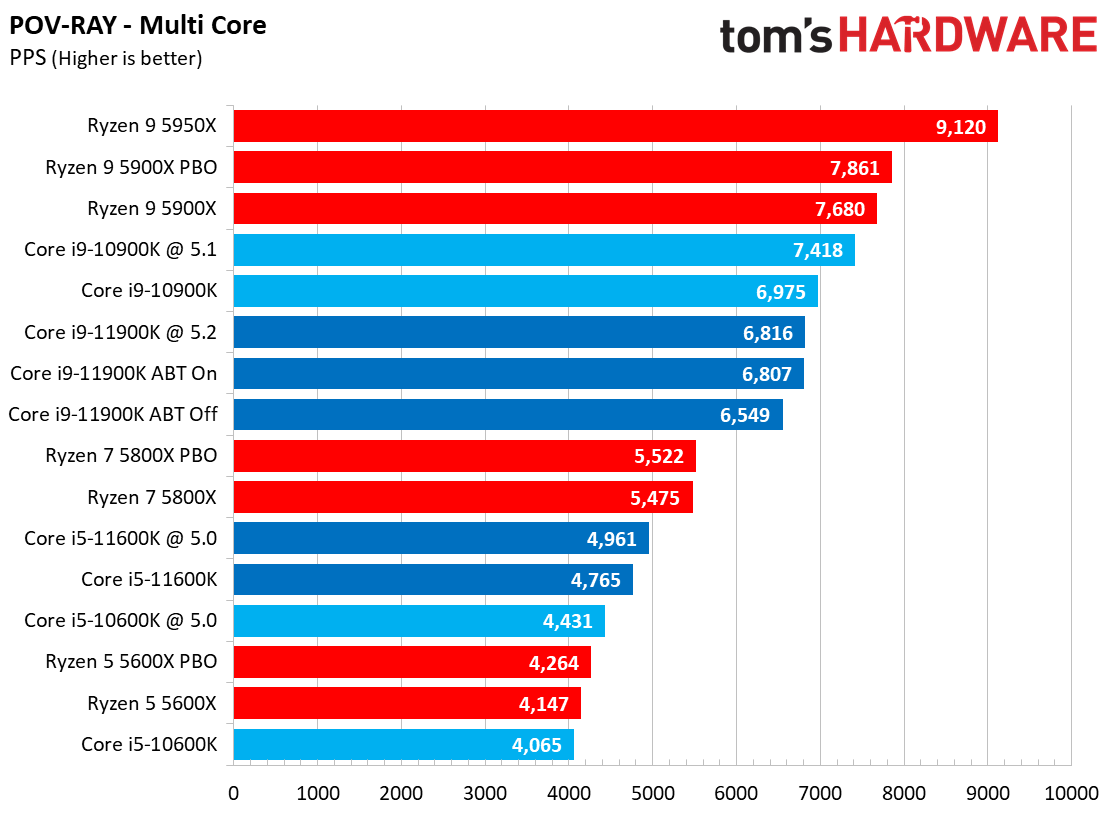
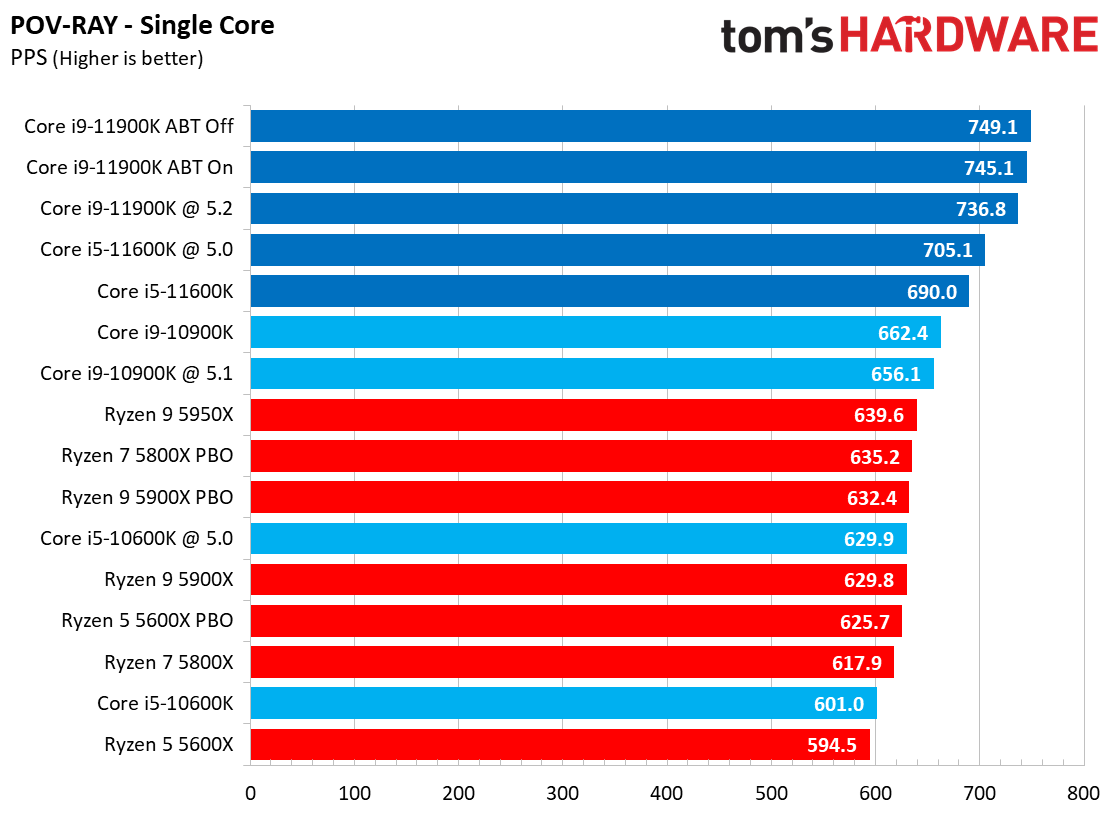
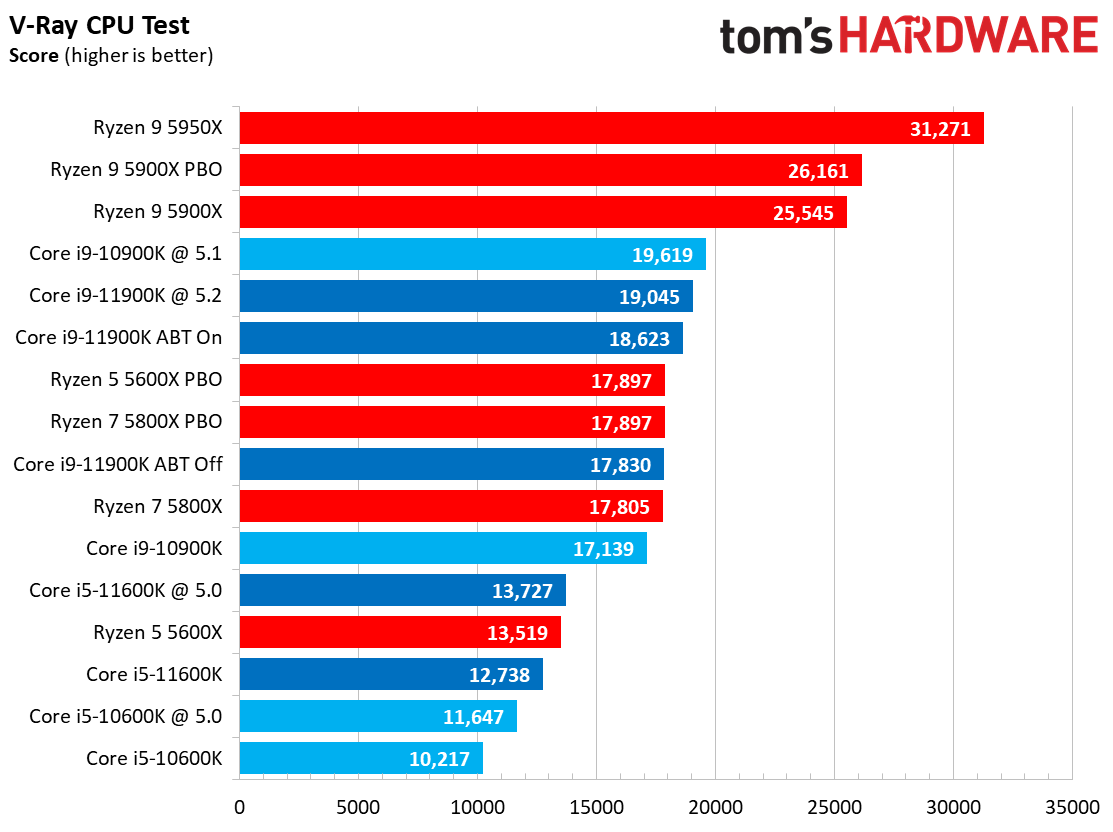
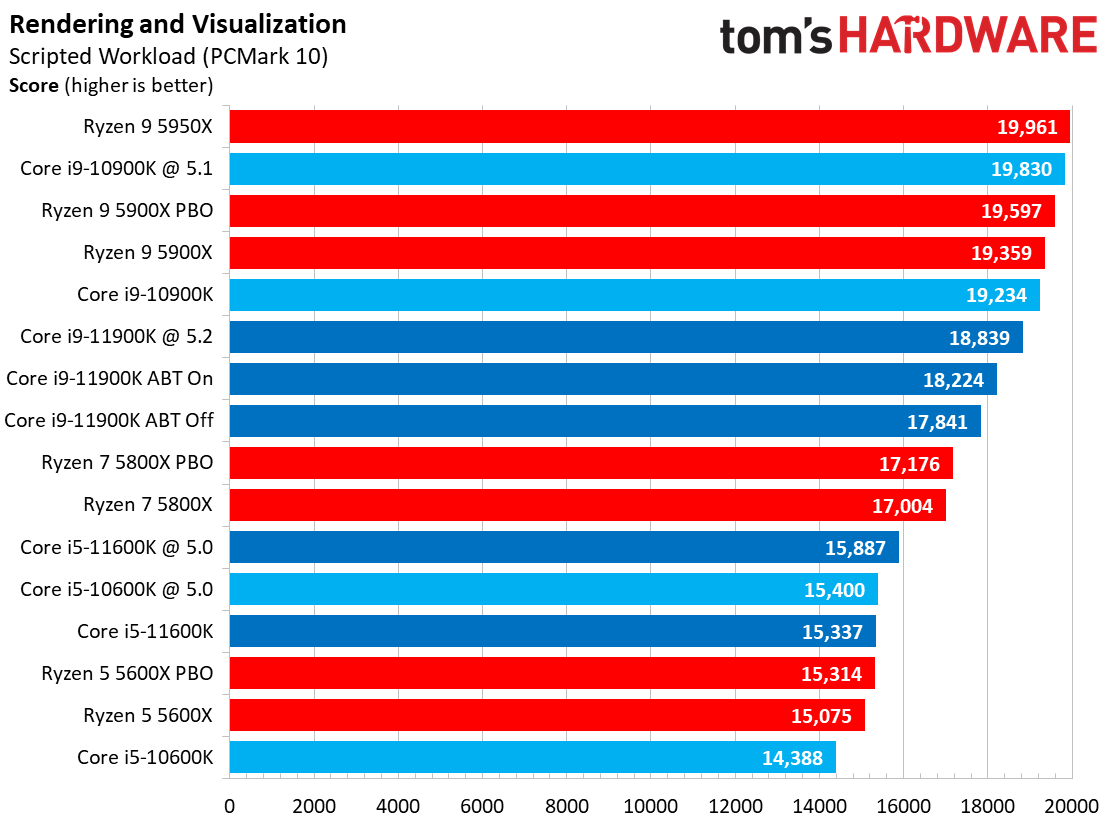
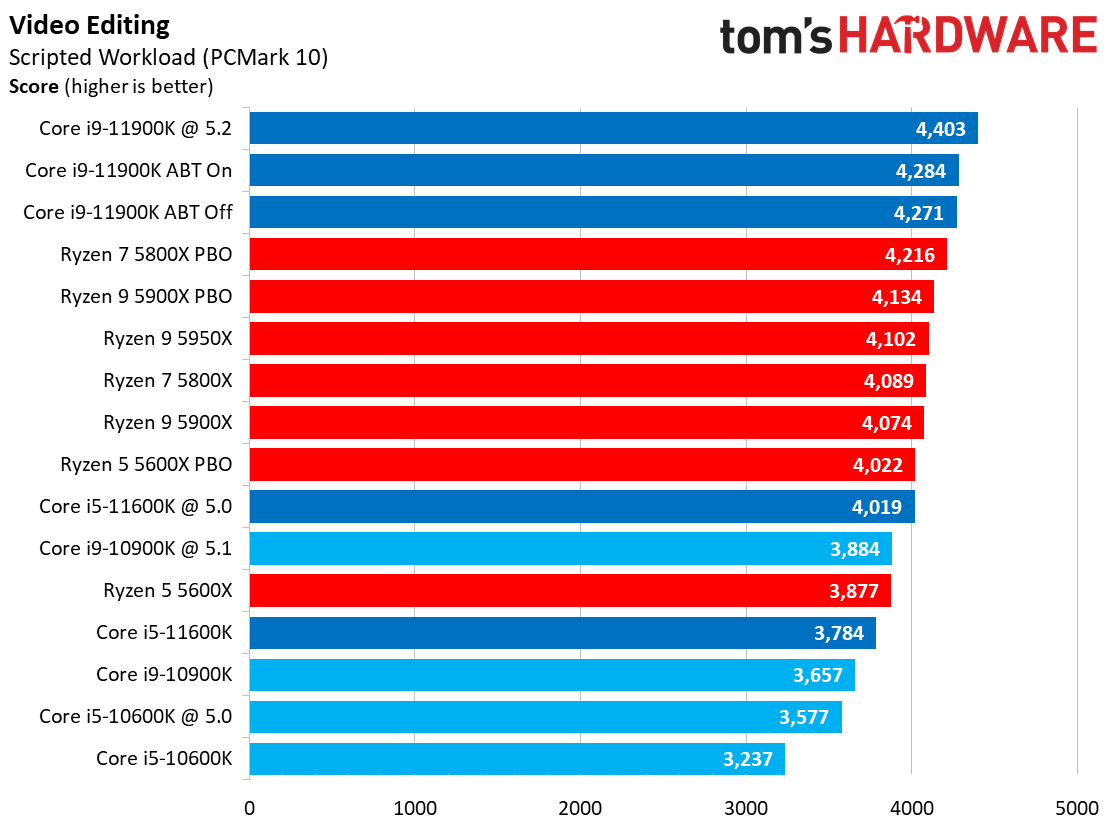

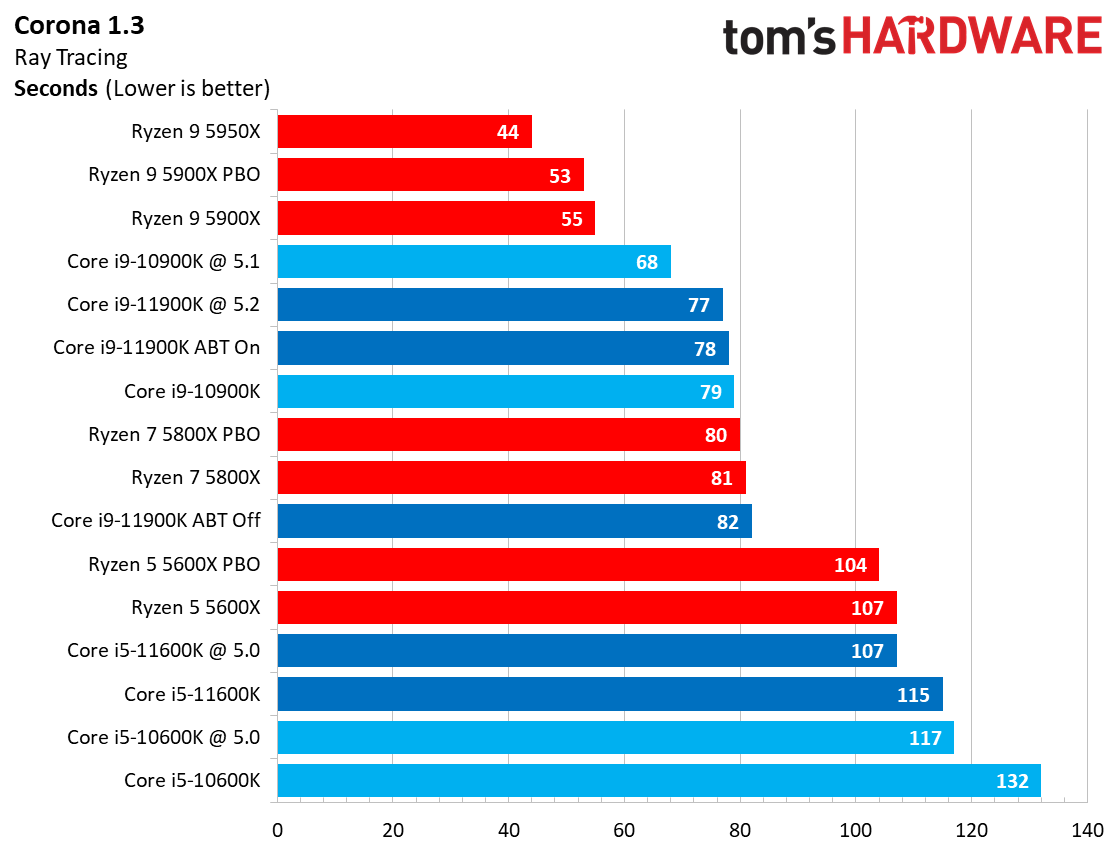
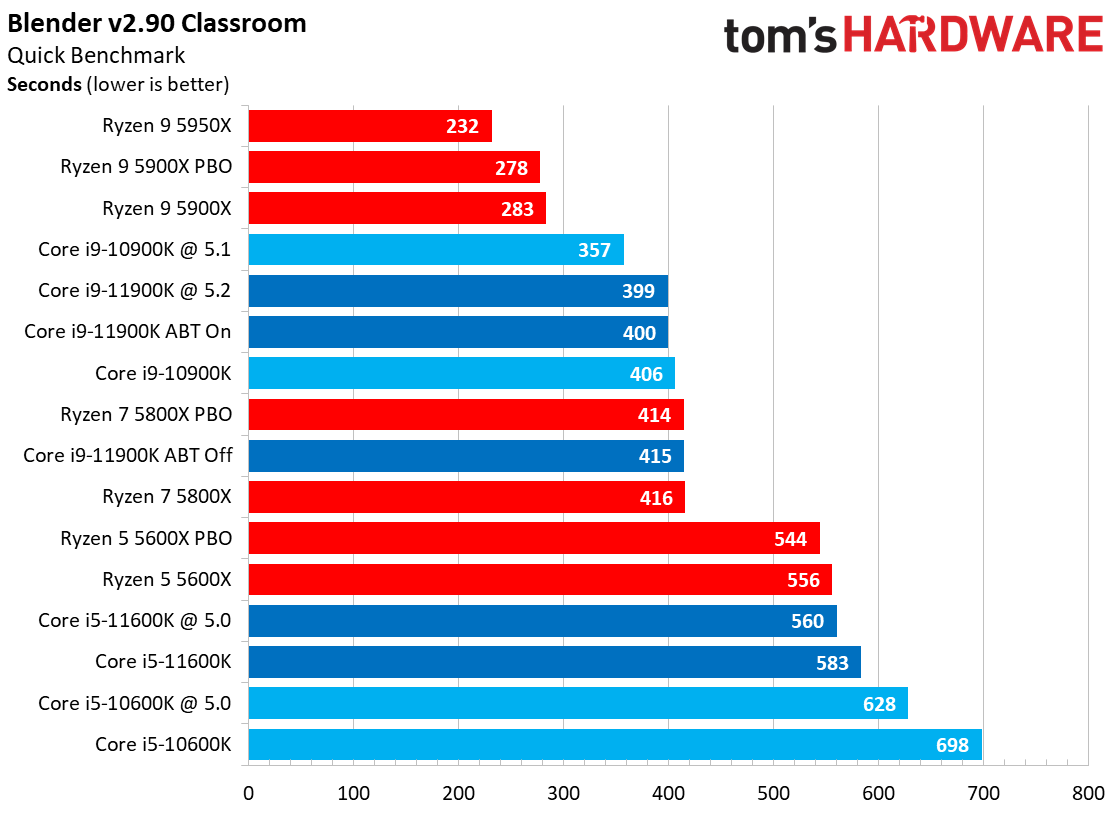
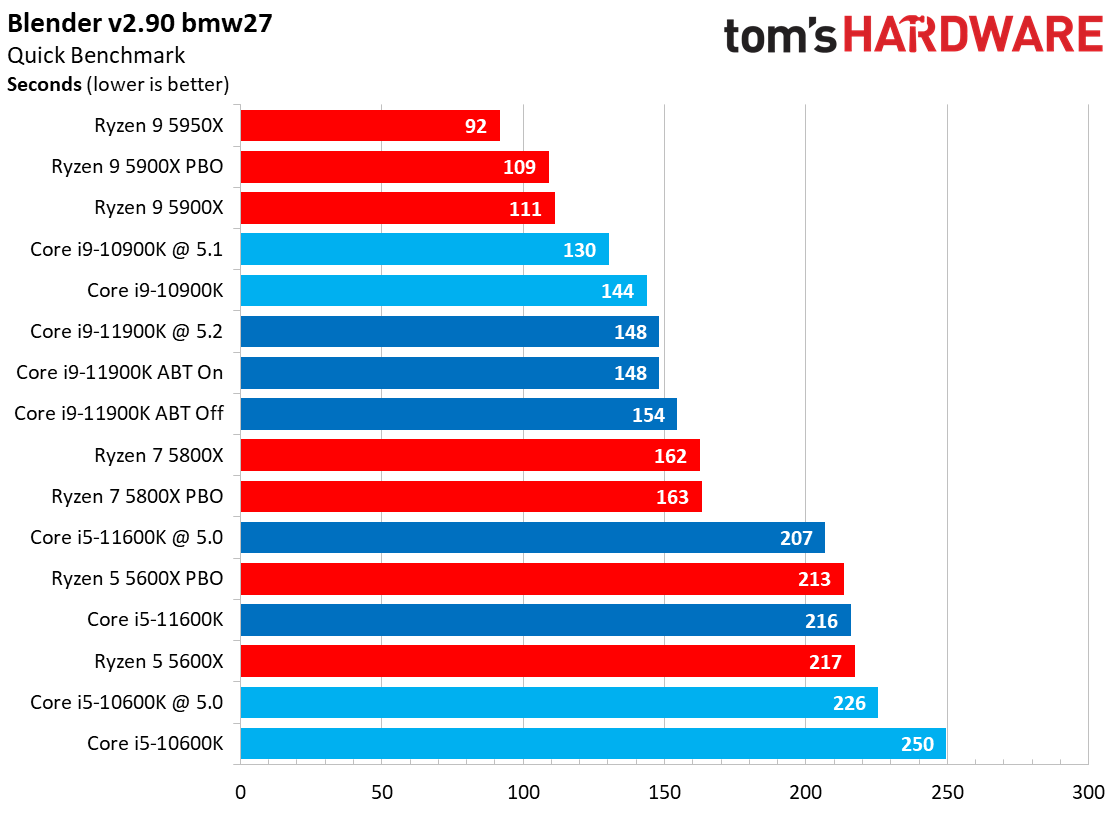
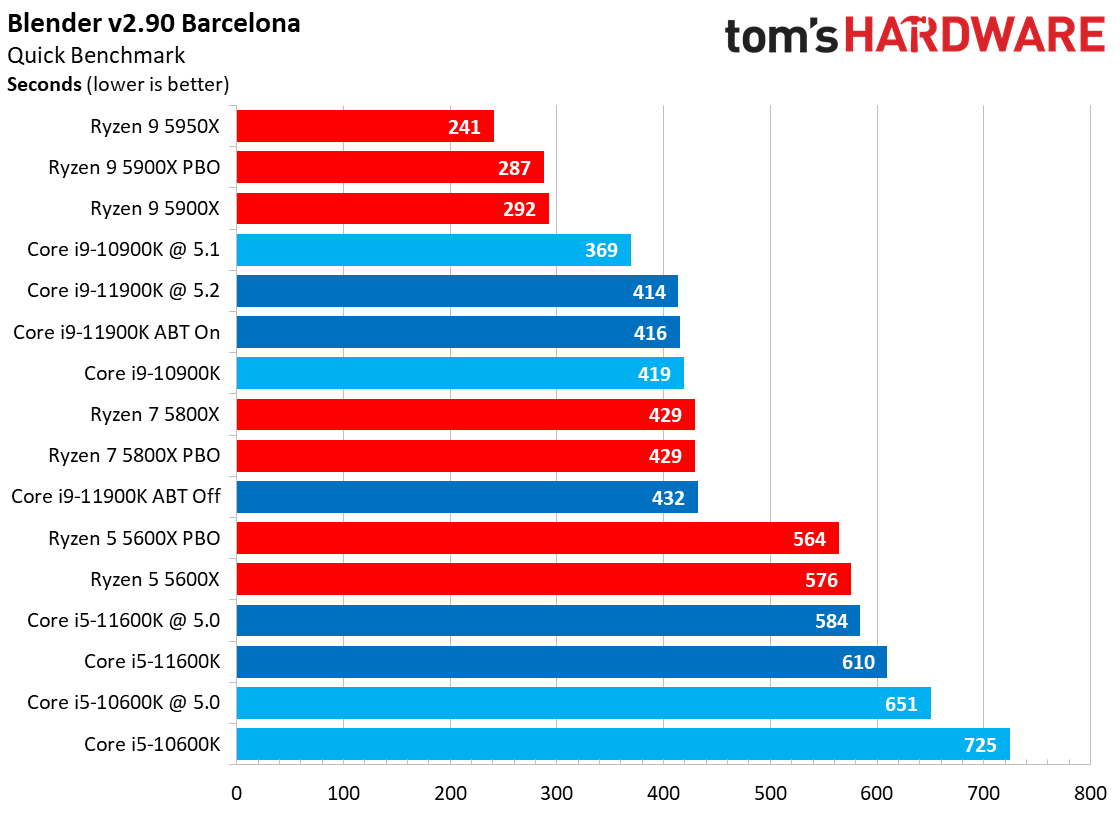
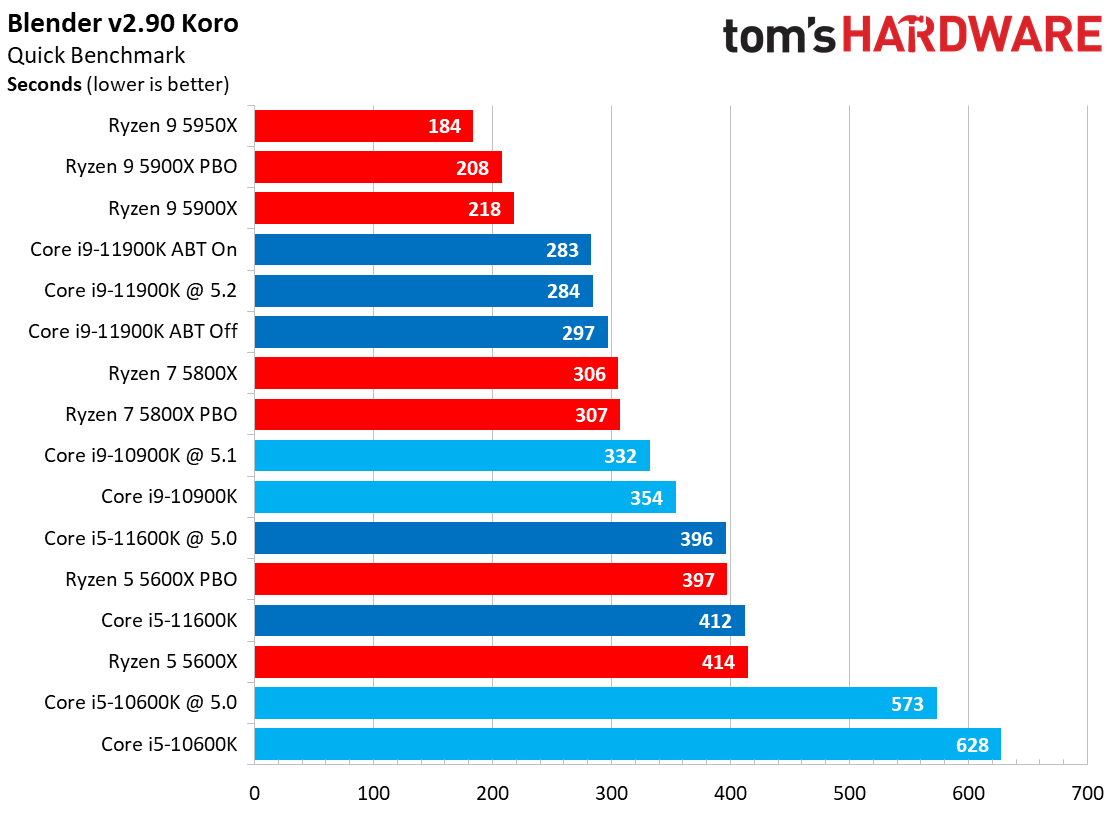
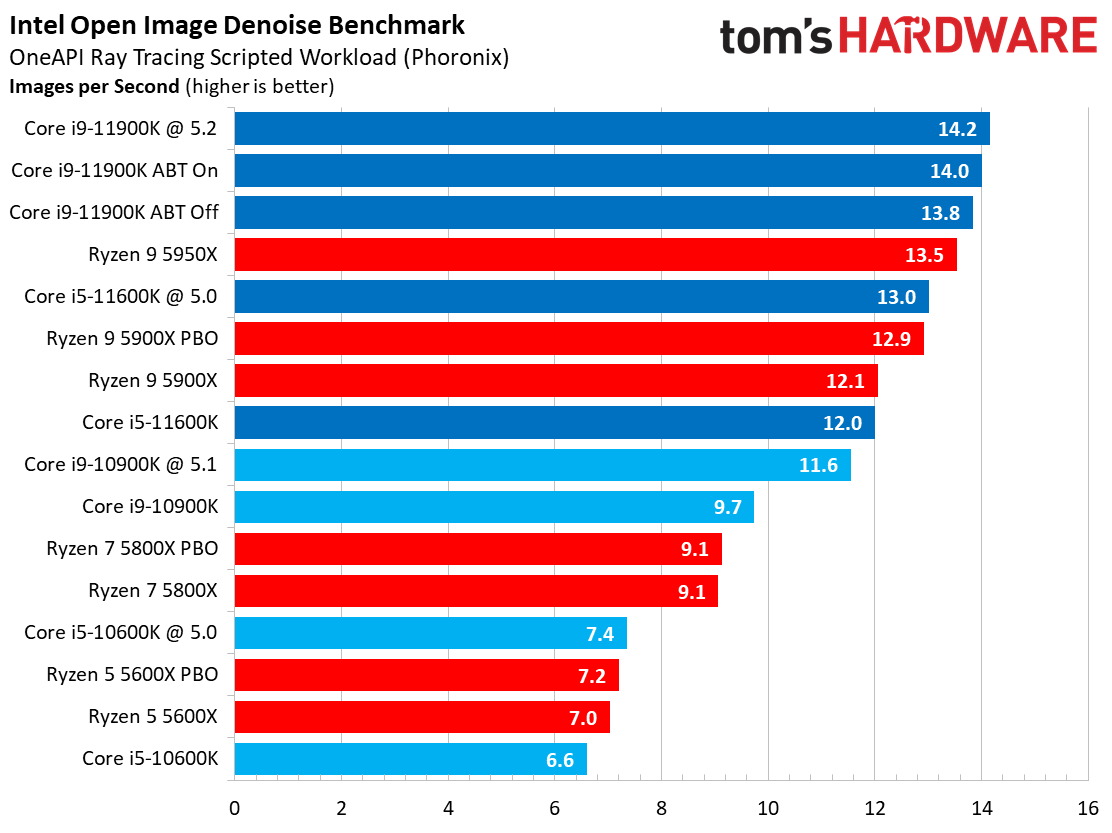
The eight-core Core i9-11900K can't keep pace with the similarly-priced twelve-core Ryzen 9 5900X in the threaded rendering benchmarks — it's a rather lopsided competition. In fact, in some cases, the 11900K struggles to even keep pace with the previous-gen ten-core 10900K (the C-Ray and Blender benchmarks are good examples), and that's even after overclocking the 11900K. However, the Core i9-11900K is exceedingly competitive in AVX-enabled applications given its core counts and excels in the single-threaded rendering workloads, like POV-Ray and Cinebench, where it takes the top of the charts.
The Core i5-11600K is a solid gen-on-gen step forward, though that does come at the expense of much higher power draw, as you'll see in our power consumption tests. Overall, even in threaded workloads, the Core i5-11600K is much more competitive with the Ryzen 5 5600X than its predecessor. It also takes the lead in the single-threaded rendering benchmarks.
Encoding Benchmarks on Core i9-11900K and i5-11600K
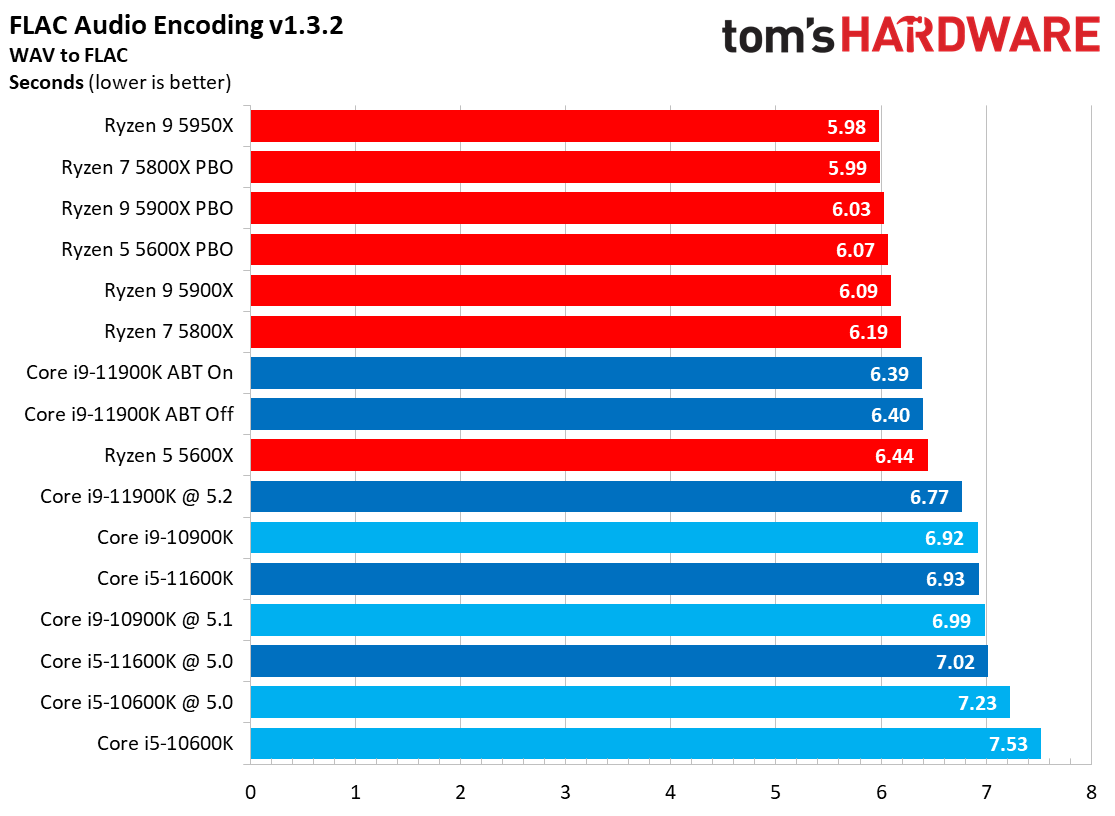
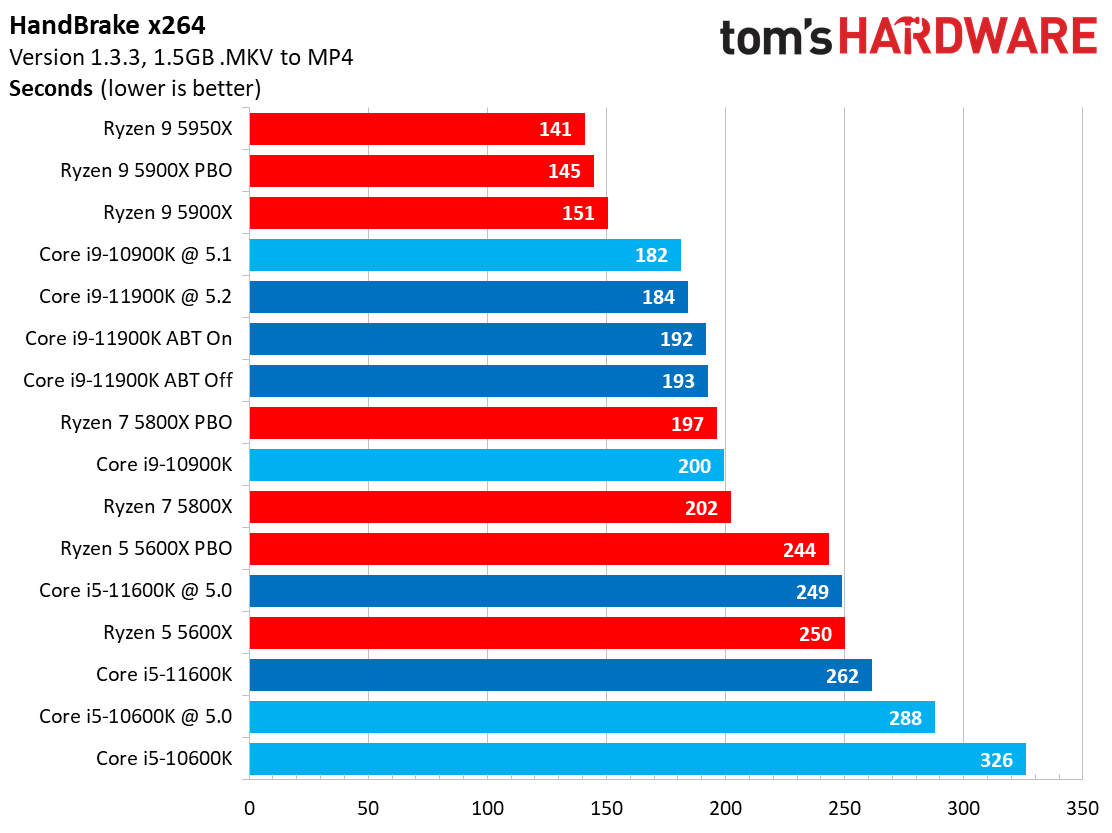
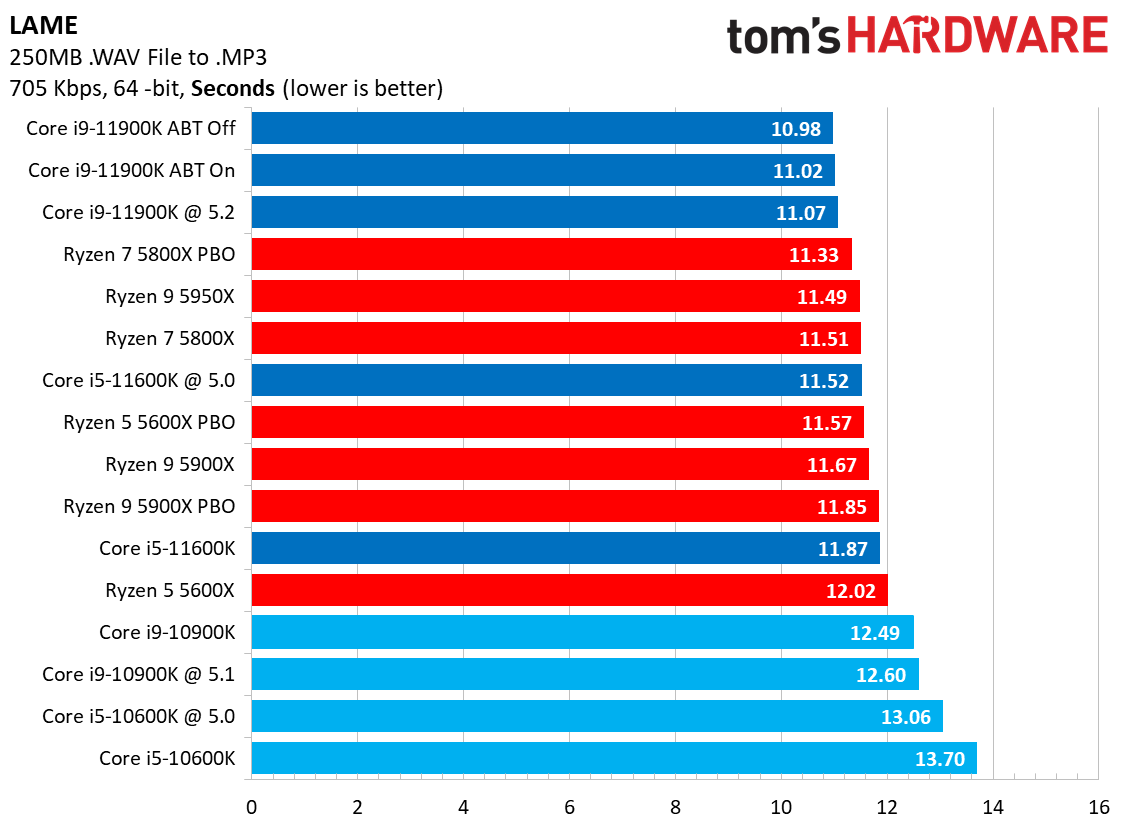
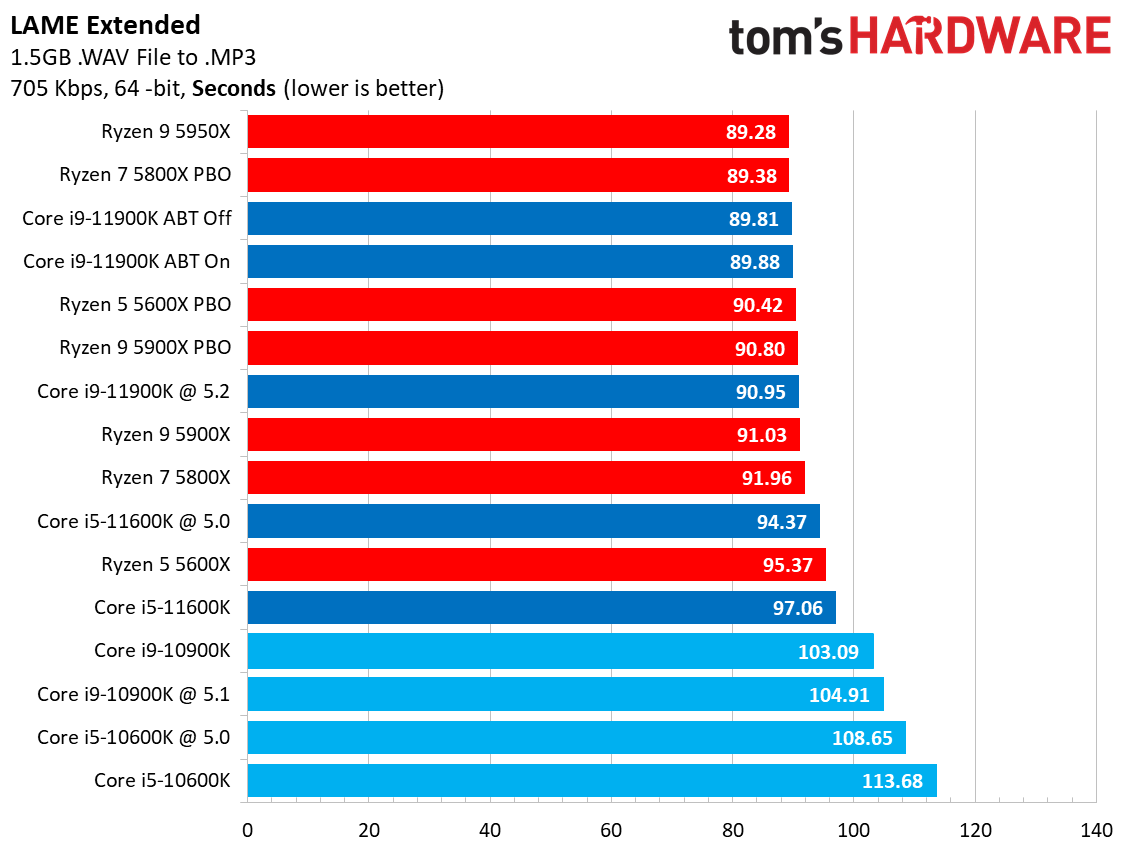
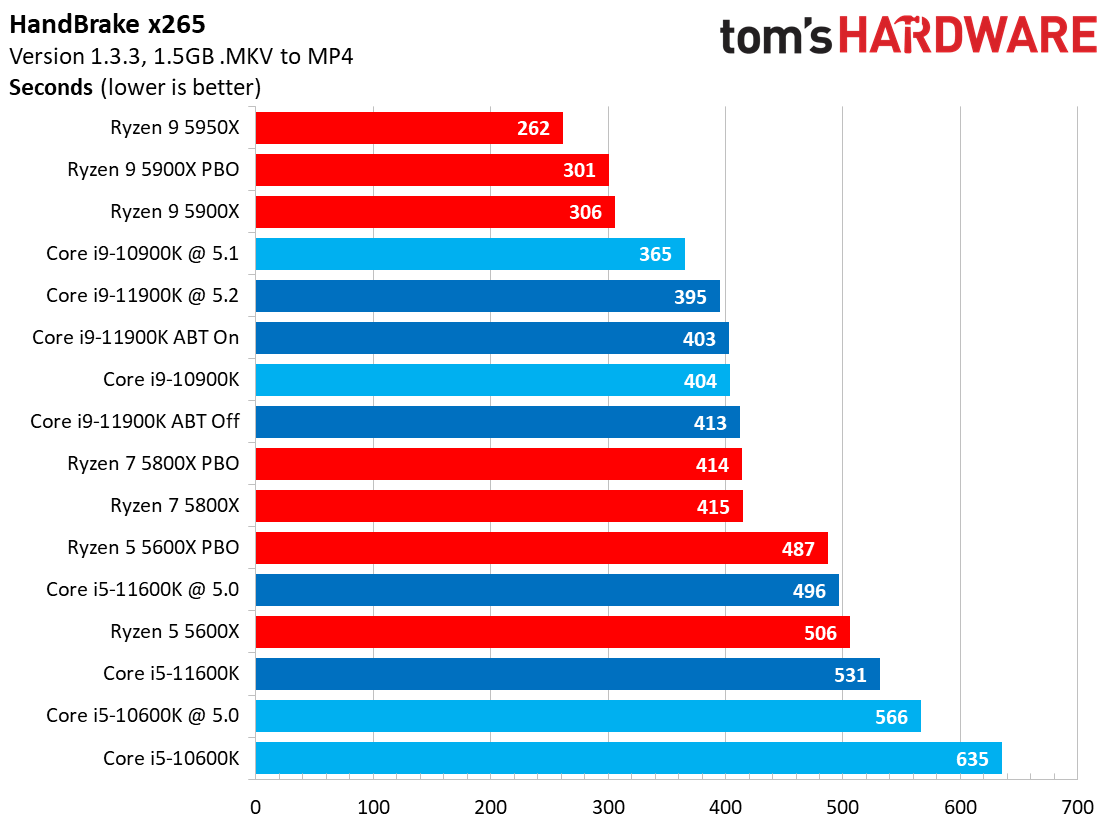
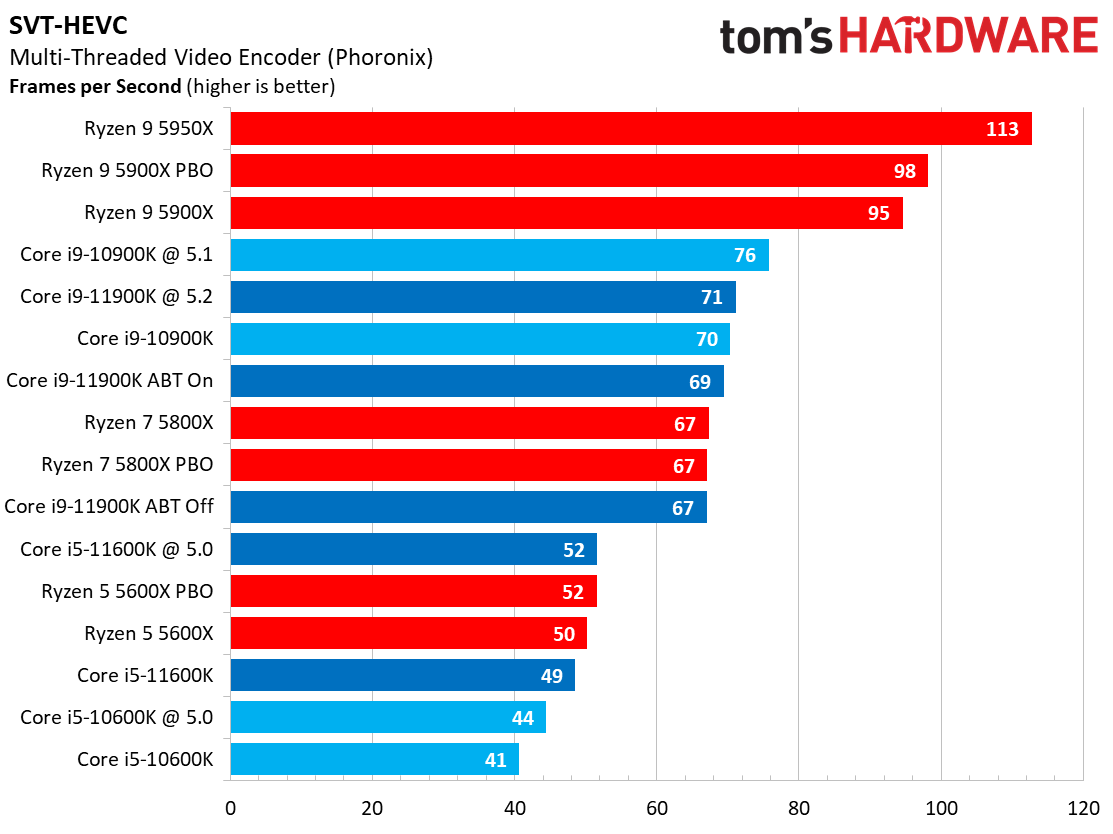
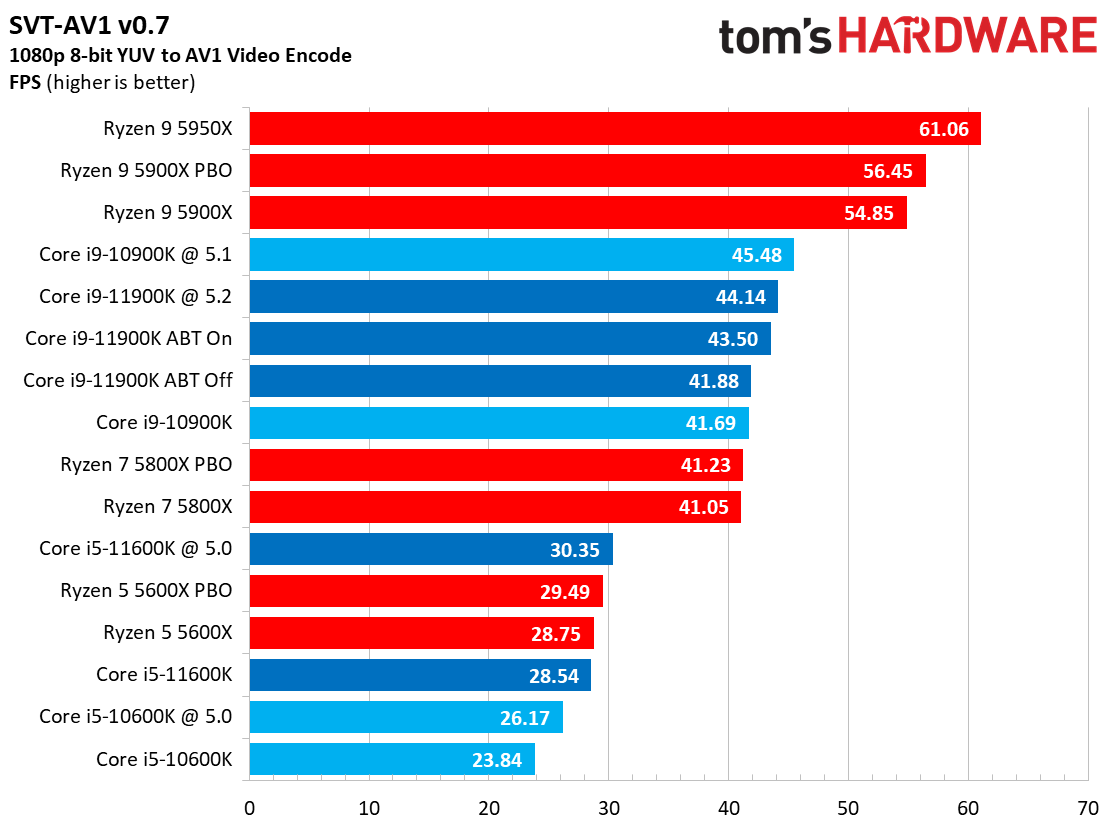
Our encoding tests include benchmarks that respond best to single-threaded performance, like the quintessential LAME and FLAC examples, but the SVT-AV1 and SVT-HEVC tests represent a newer class of threaded encoders.
The Ryzen 5000 chips reset the LAME pecking order with their impressive IPC gains, but Intel's Rocket Lake chips regain the lead over their similarly-priced competitors.
Switching gears to HandBrake, which we test in both AVX-light x264 and AVX-heavy x265 flavors, shows that the Core i9-11900K is simply outmatched against the Ryzen 9 5900X. However, the Core i5-11600K has gained near-parity with the Ryzen 5 5600X in these tests, which bodes well given its lower pricing.
Get Tom's Hardware's best news and in-depth reviews, straight to your inbox.
Web Browsing on Core i9-11900K and i5-11600K
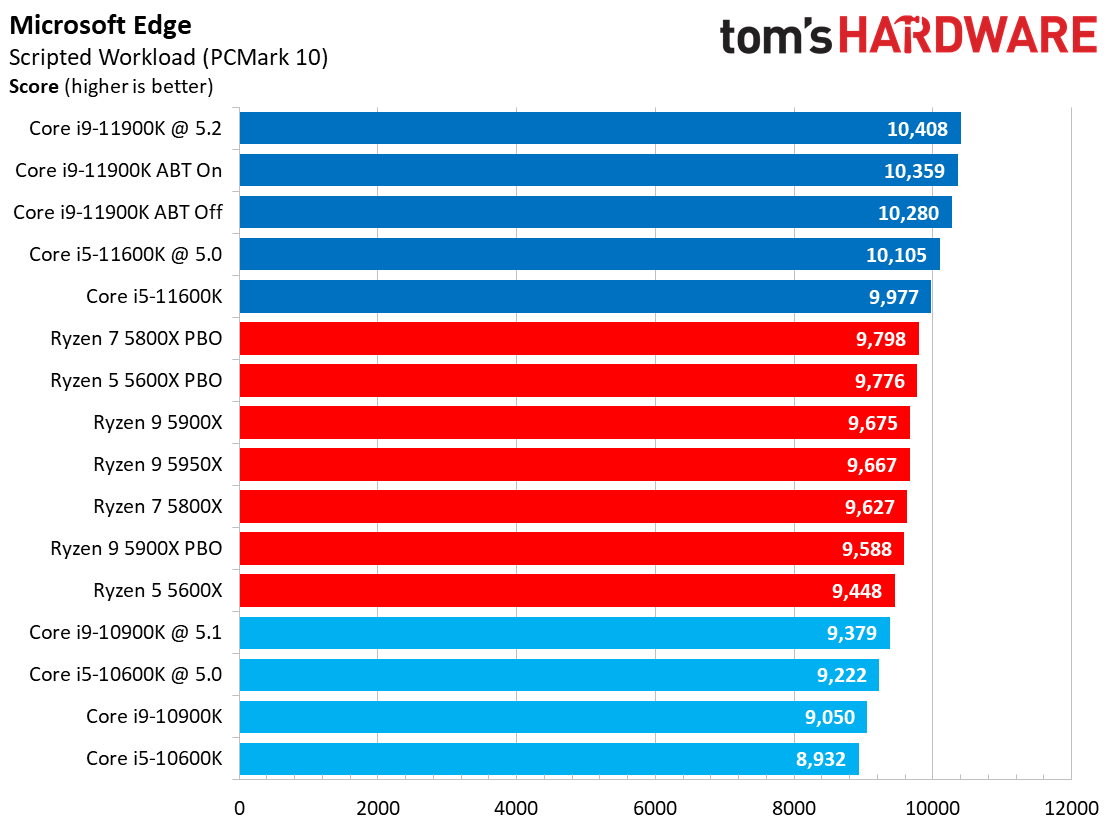
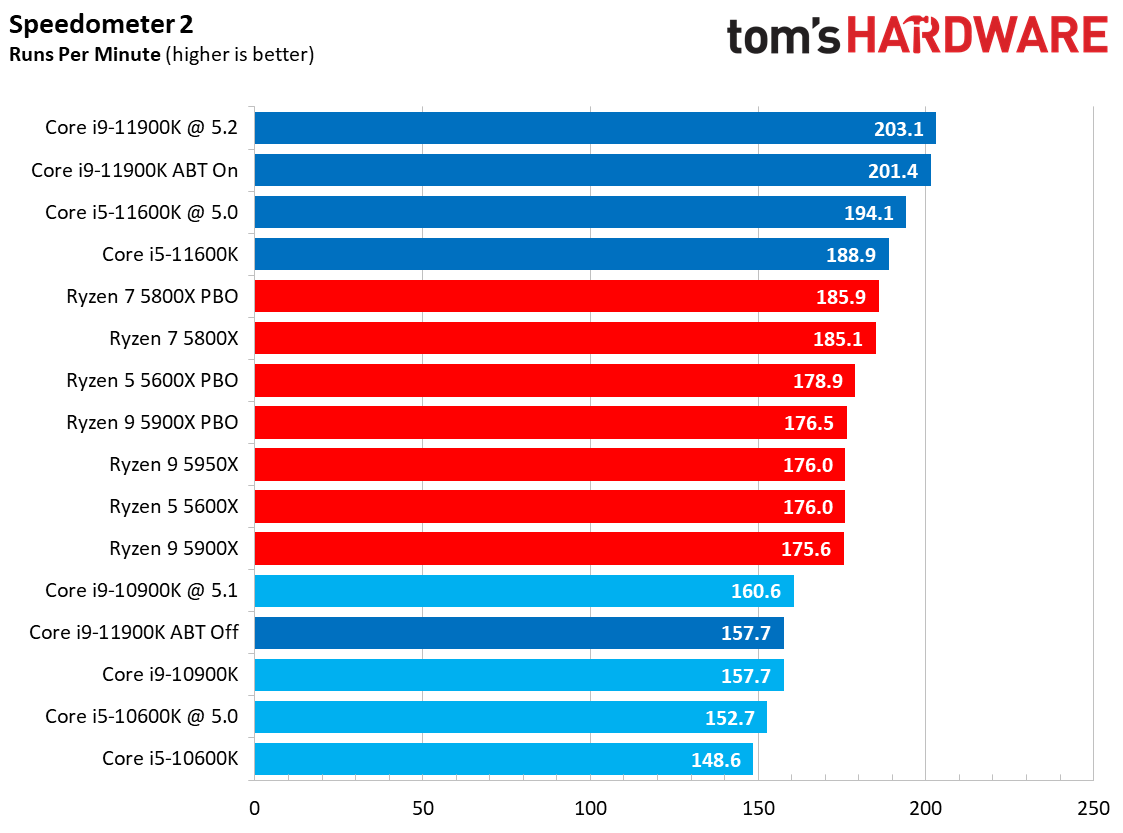
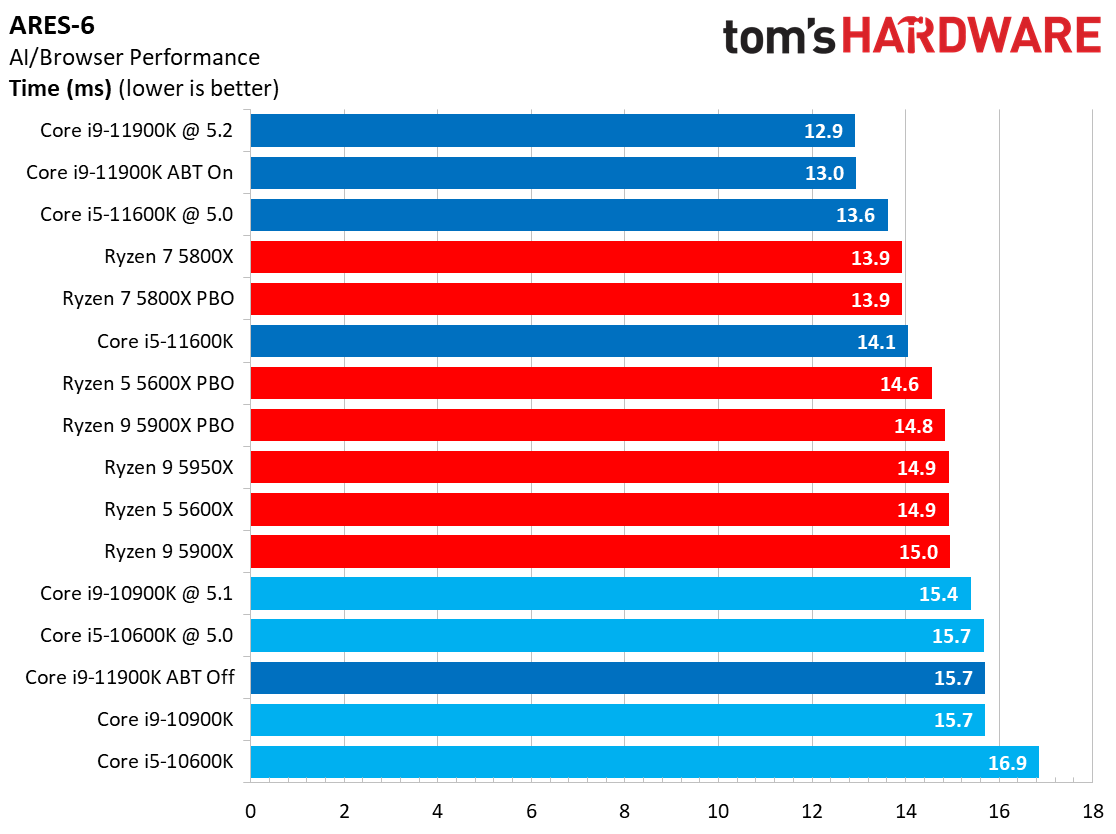
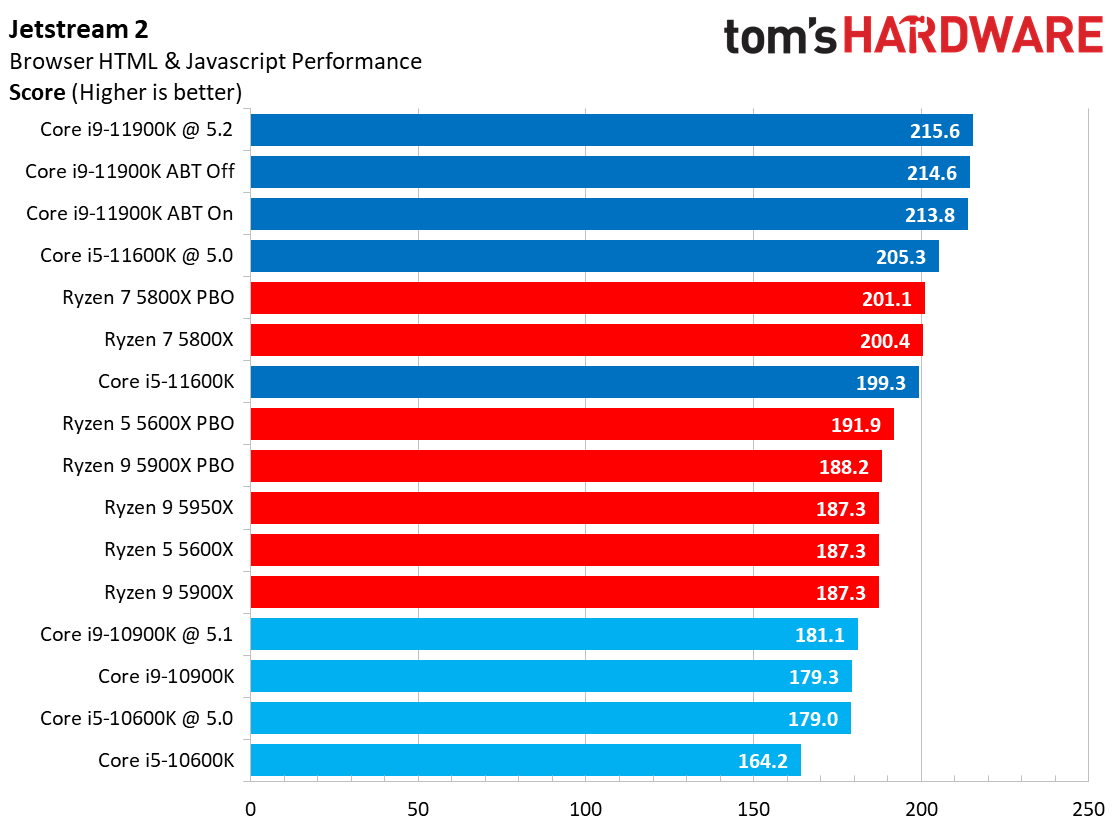
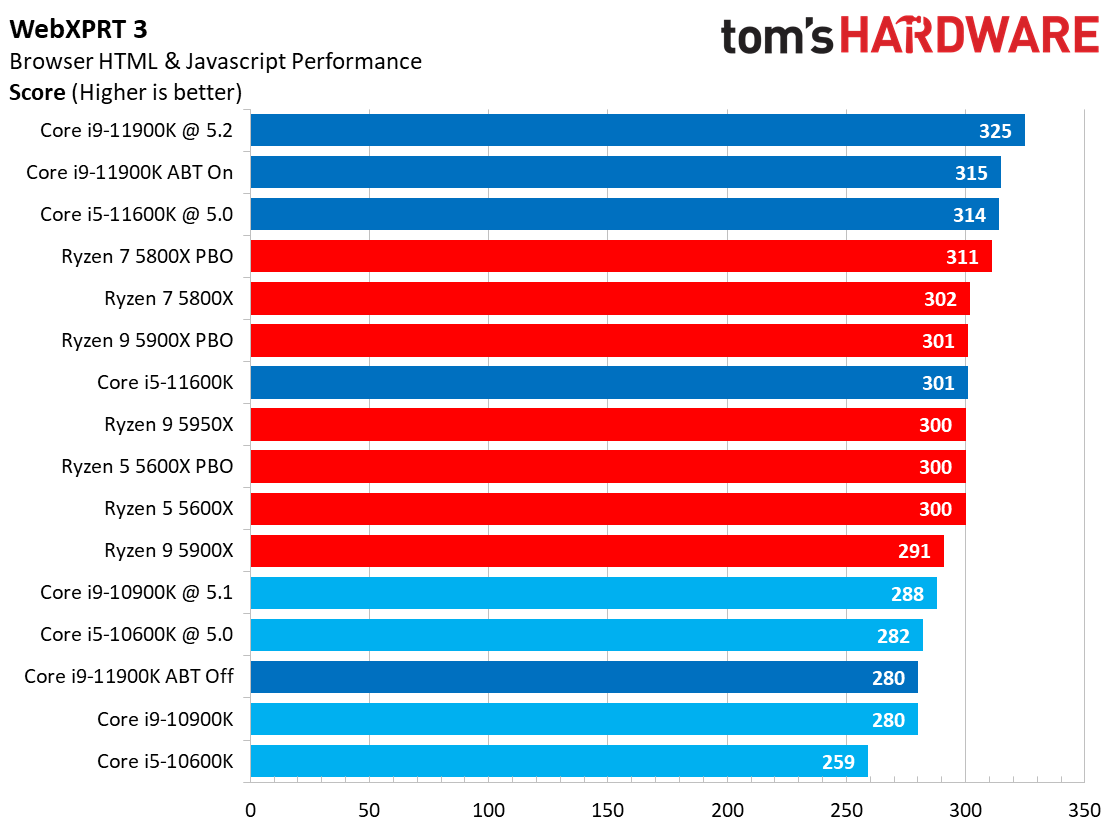
We test all of these benchmarks in a version-locked Chrome browser, with the notable exception of the Edge test. Unfortunately, Google has apparently thwarted our locking technique and recently updated our browser, repeatedly, on our test systems. As such, we re-tested all of these benchmarks.
These benchmarks are almost exclusively lightly-threaded, so Intel held sway in these tests until Zen 3 arrived and threw the lead in AMD's favor by substantial margins. The arrival of Rocket Lake upsets the hierarchy again on the strength of Rocket's per-core performance improvements.
Office and Productivity on Core i9-11900K and i5-11600K

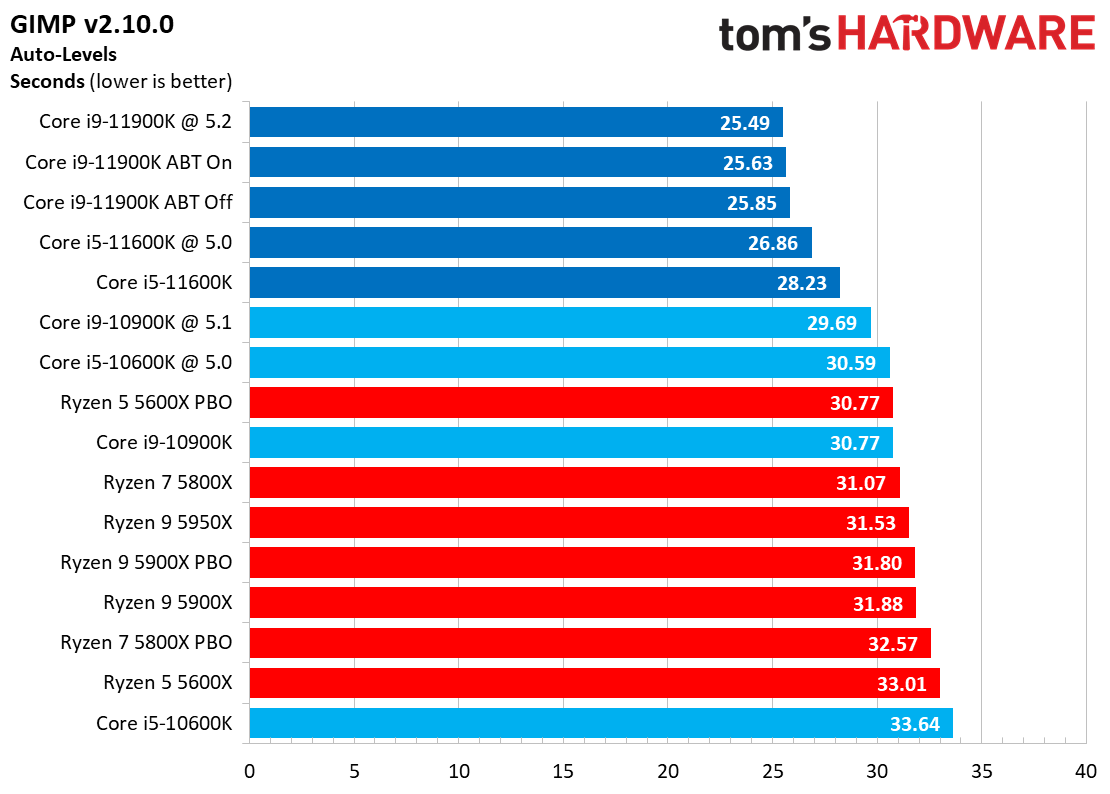
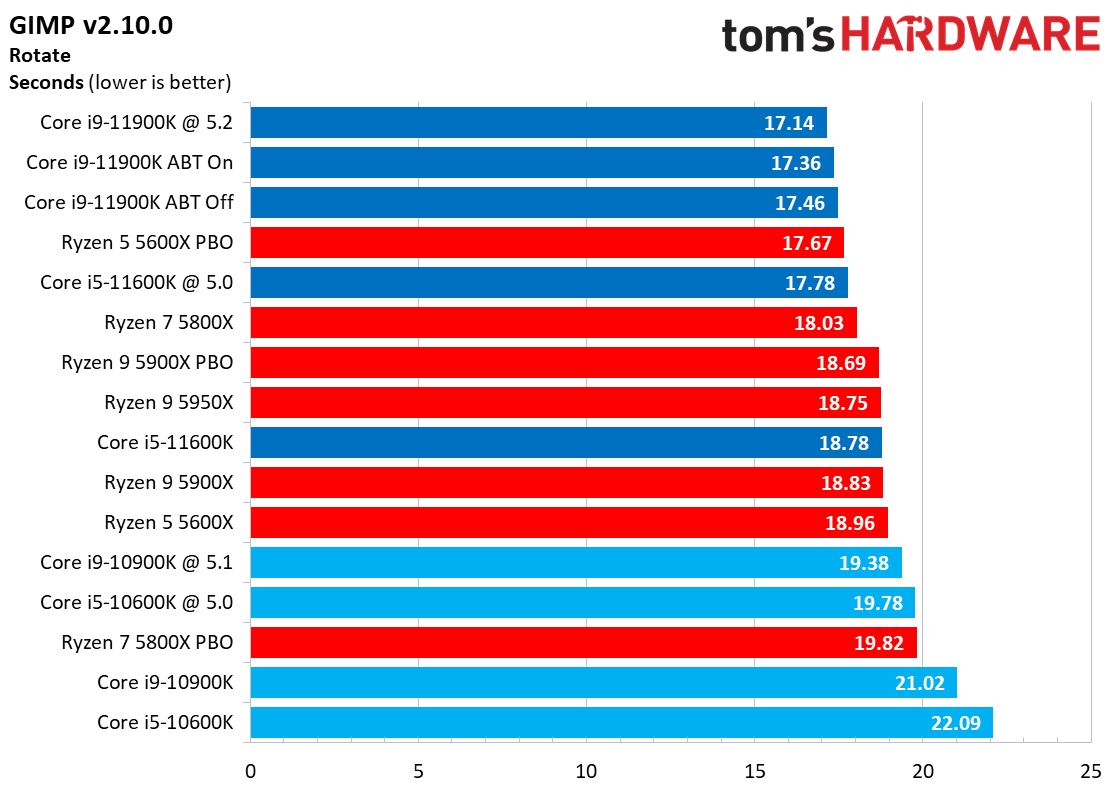
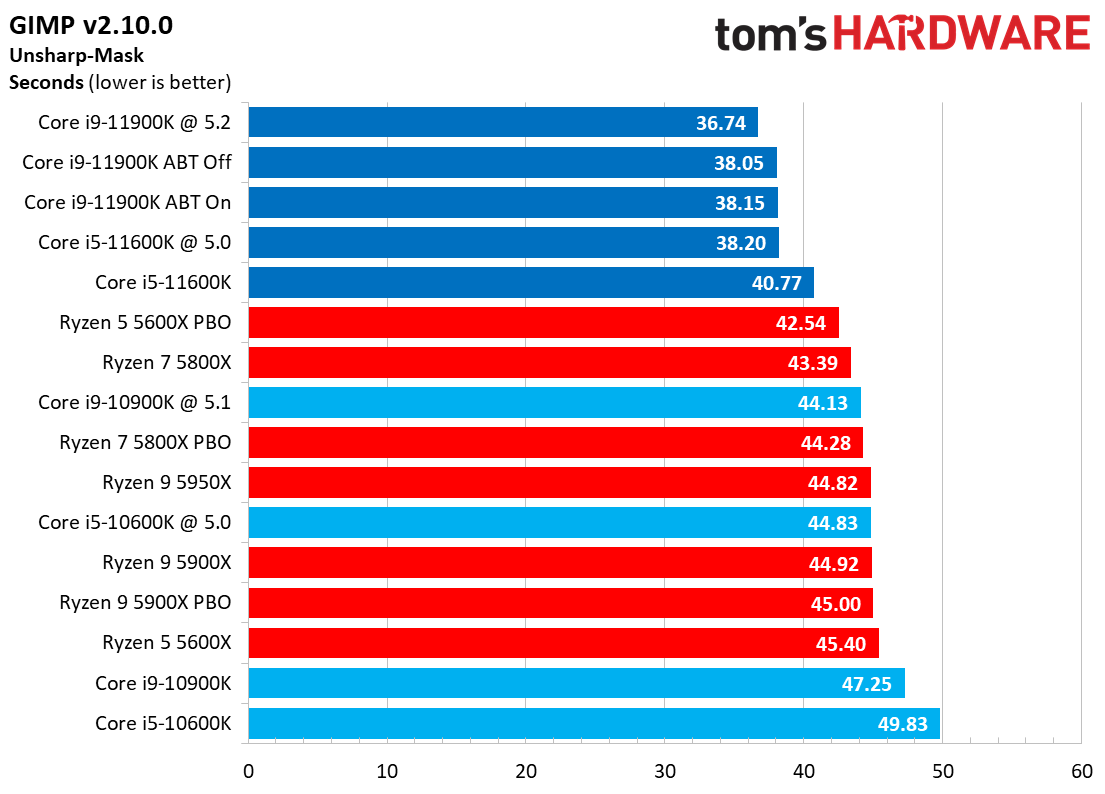
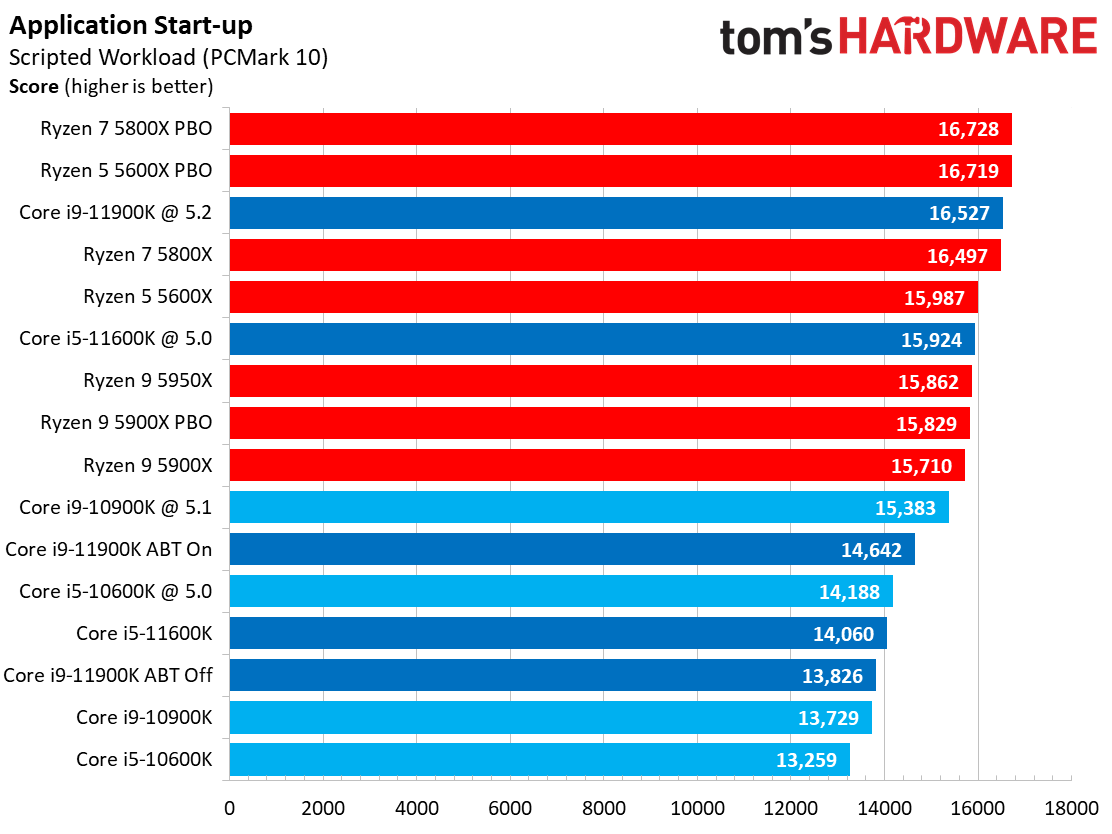
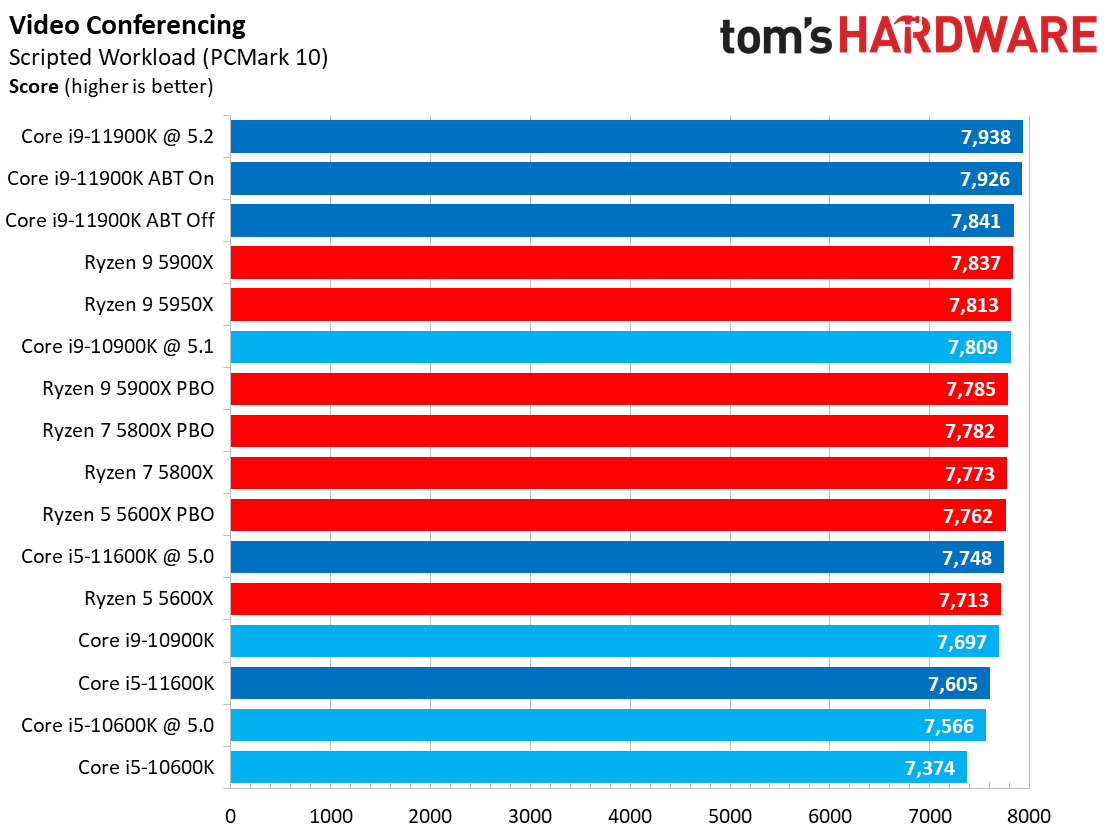
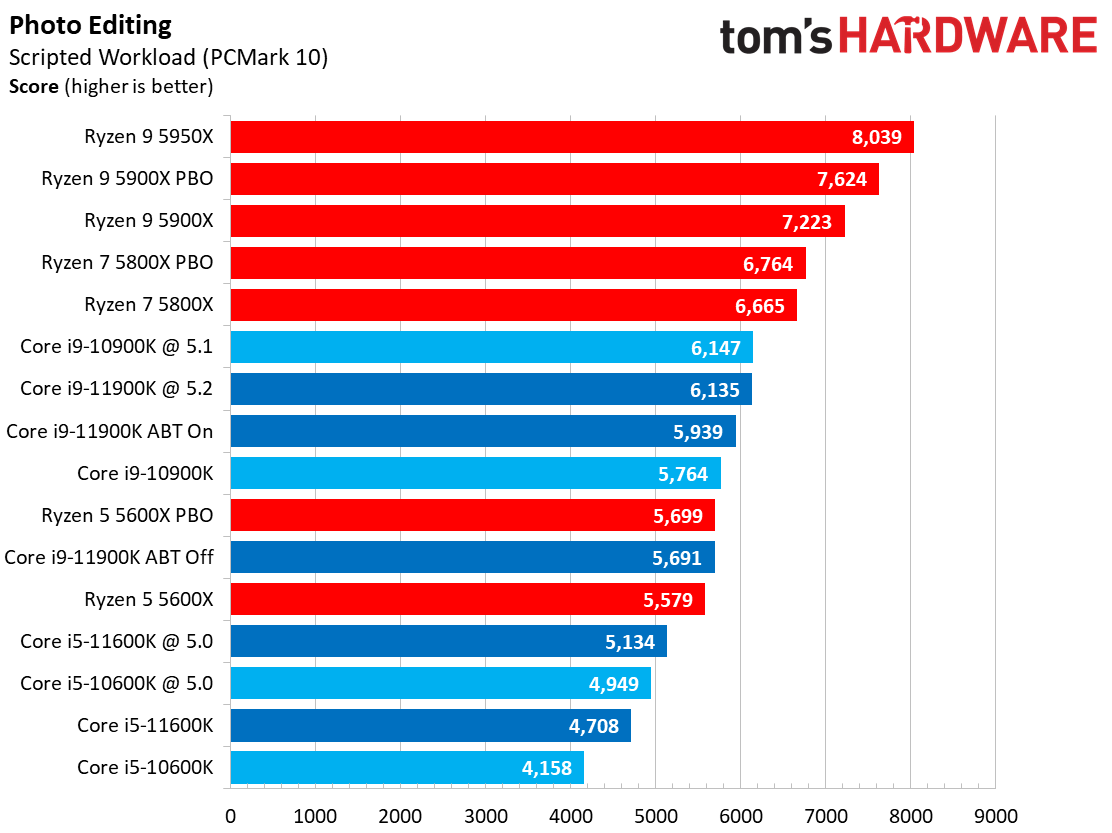

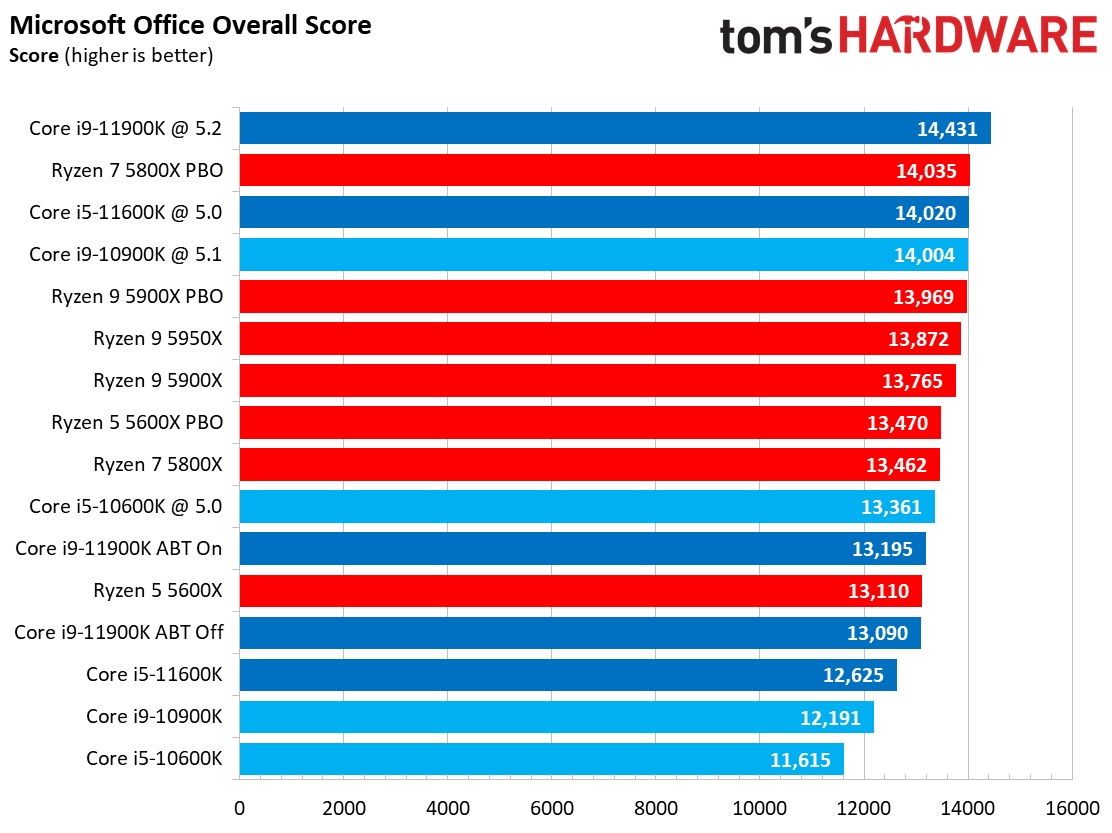
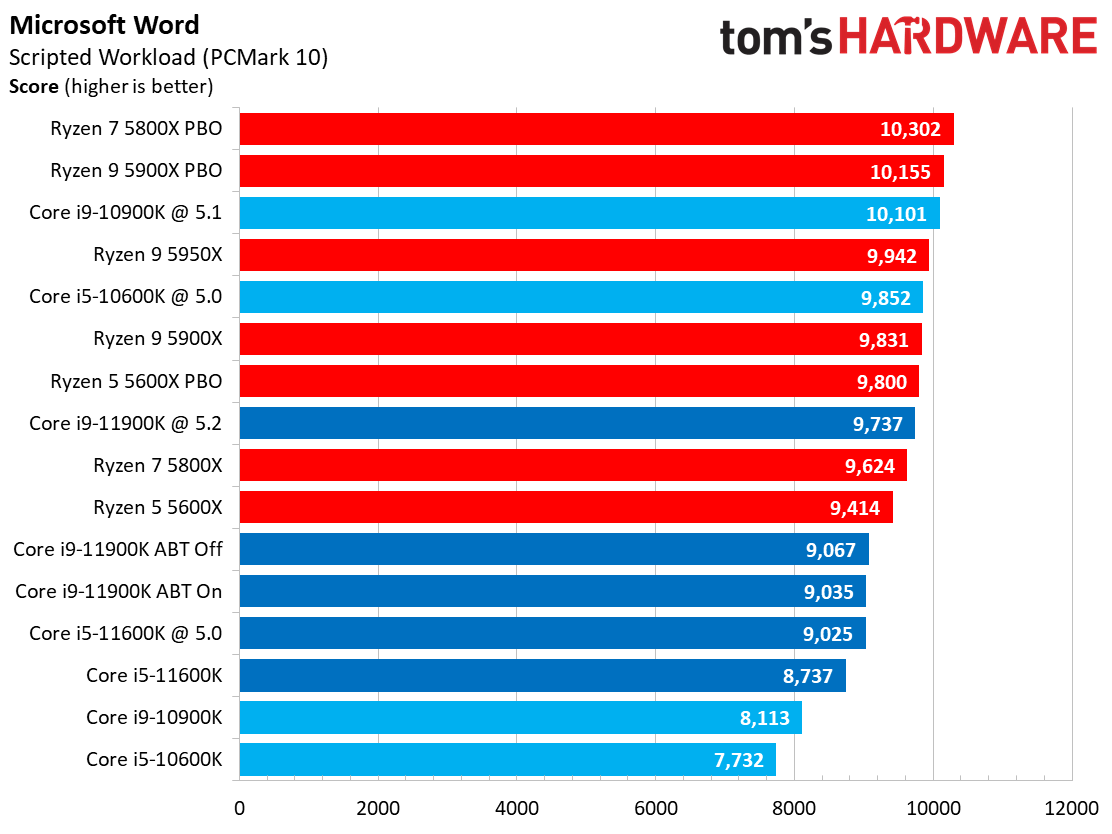
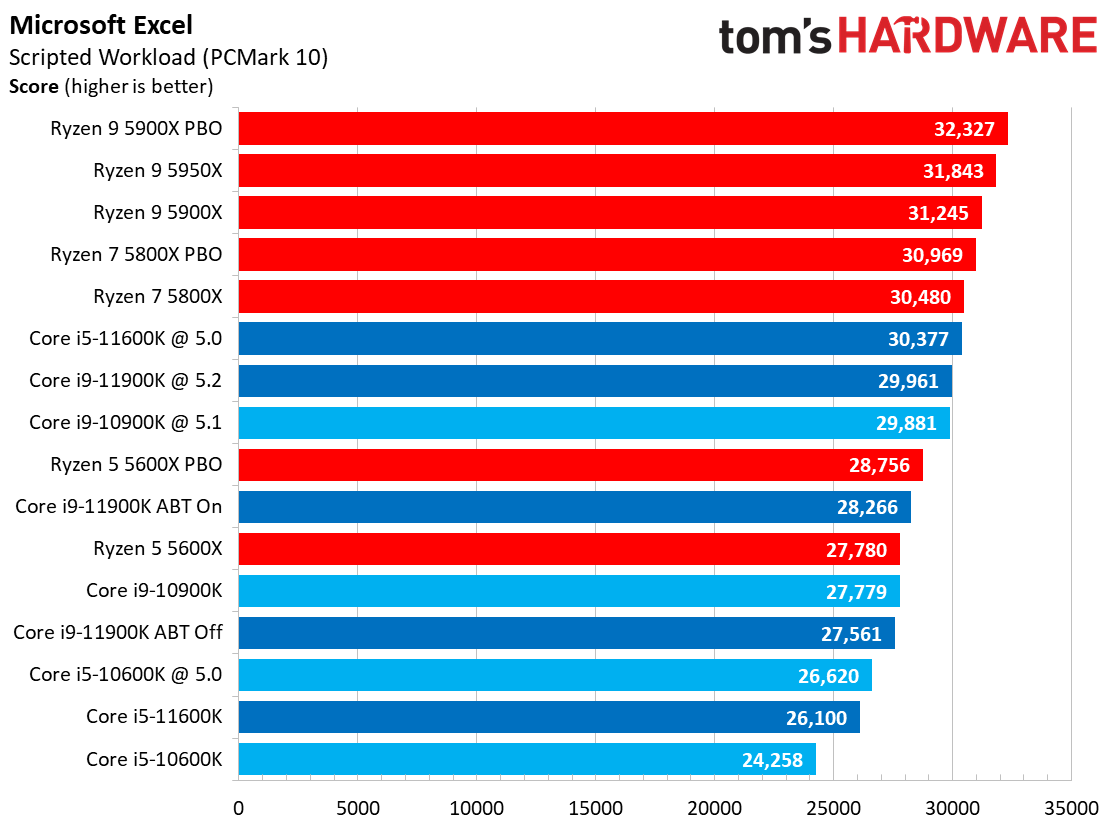
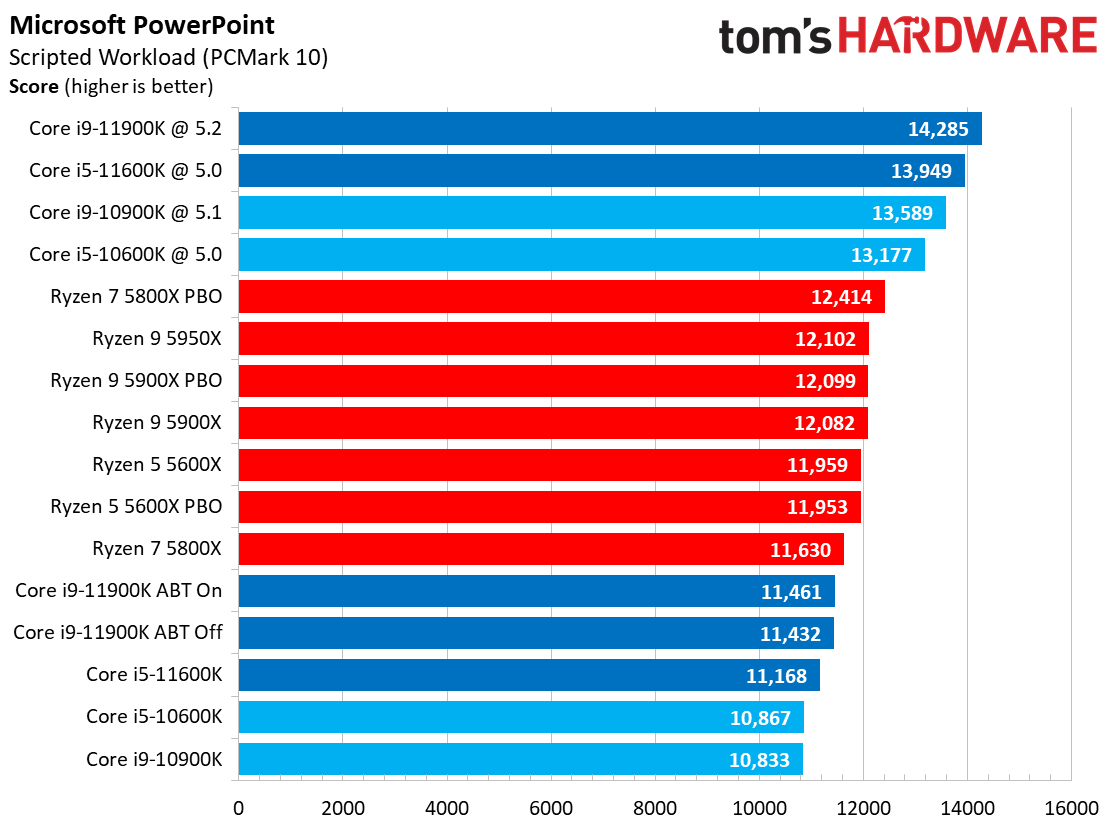
Our GIMP benchmarks respond exceedingly well to single-threaded performance, and here we see a similar trend to the web browser tests — Intel has regained the lead in a convincing fashion. AMD still holds sway in a few of the tests, like the multi-threaded PCMark 10 photo editing benchmark, but these tests largely go to Intel.
Compilation, Compression, AVX Performance on Core i9-11900K and i5-11600K
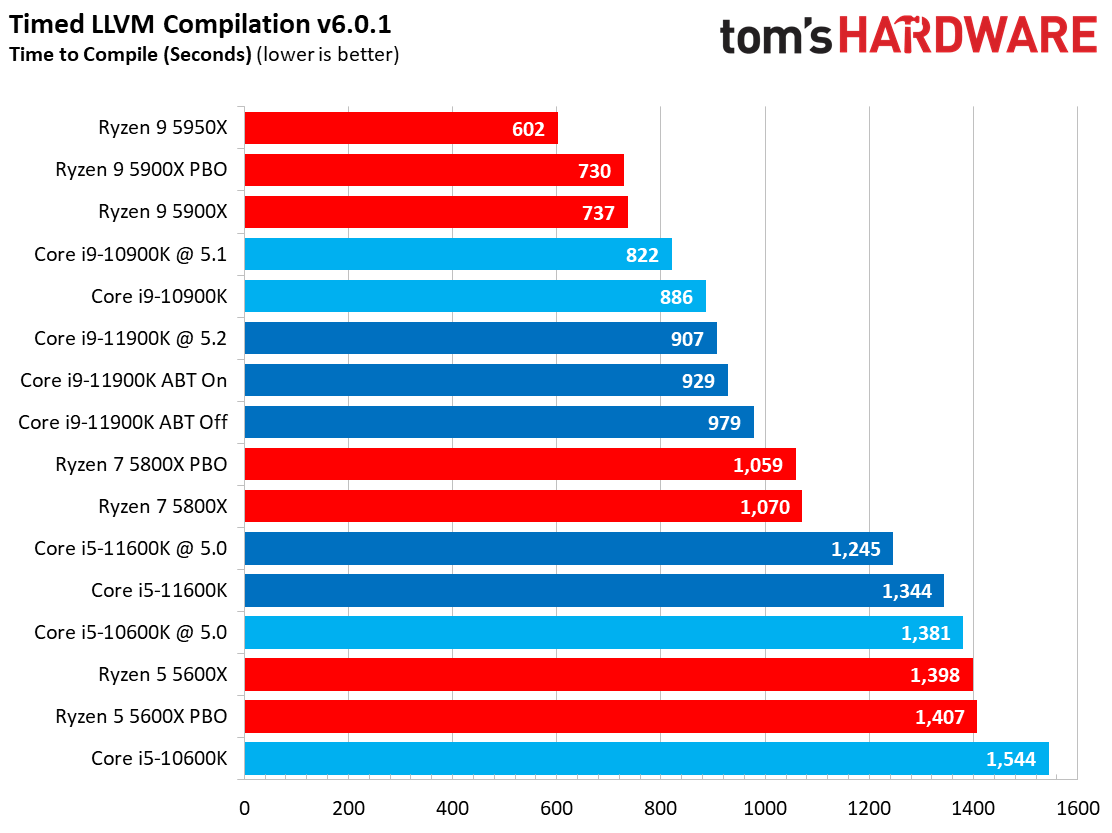
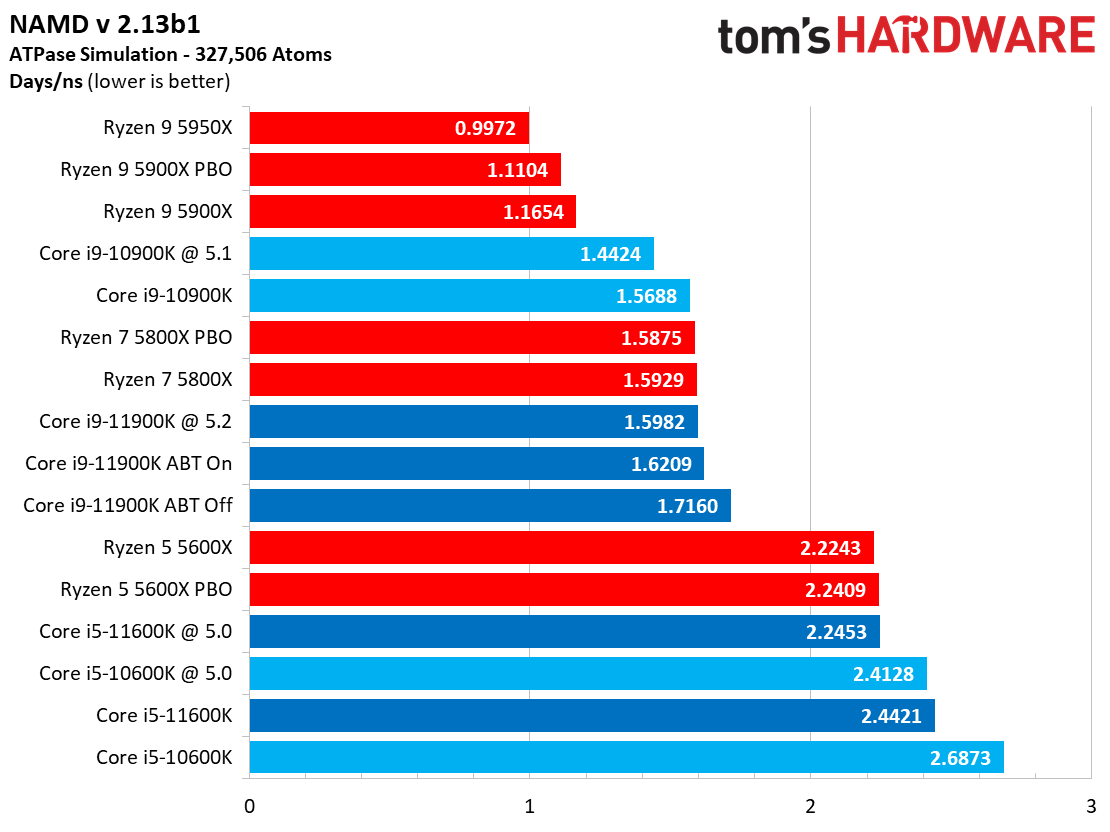
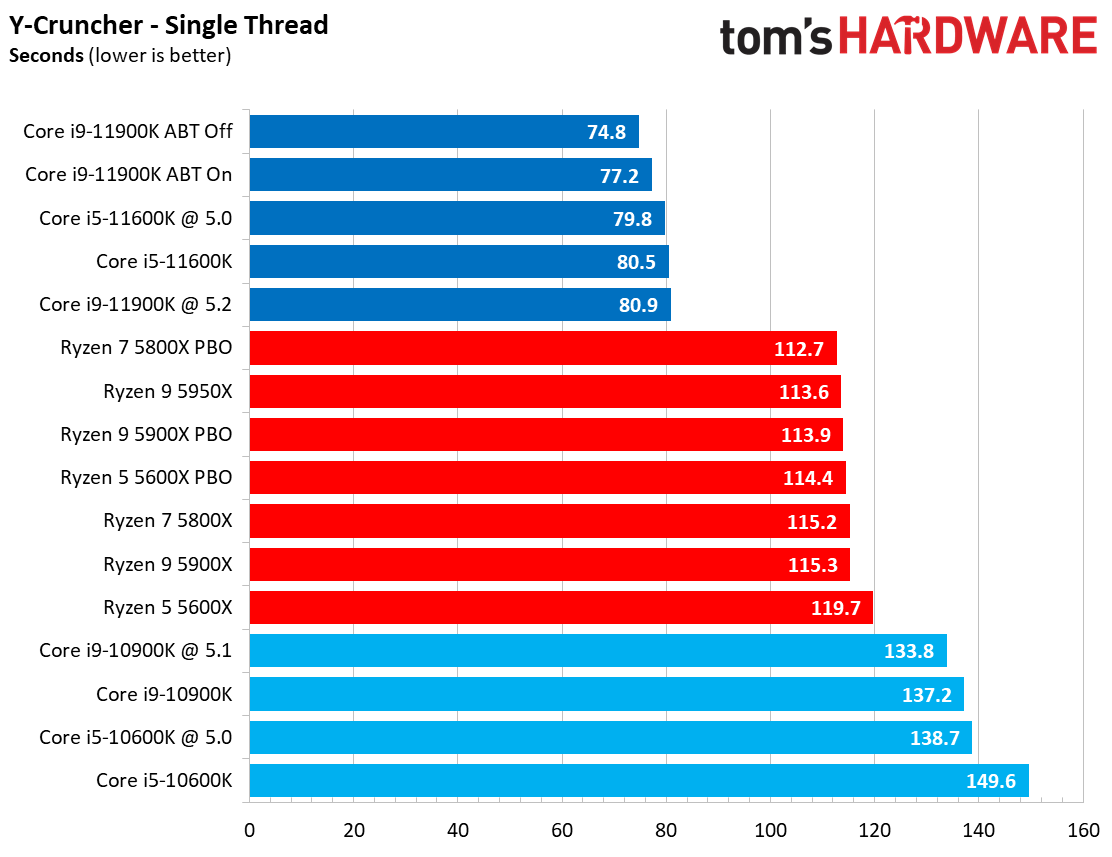
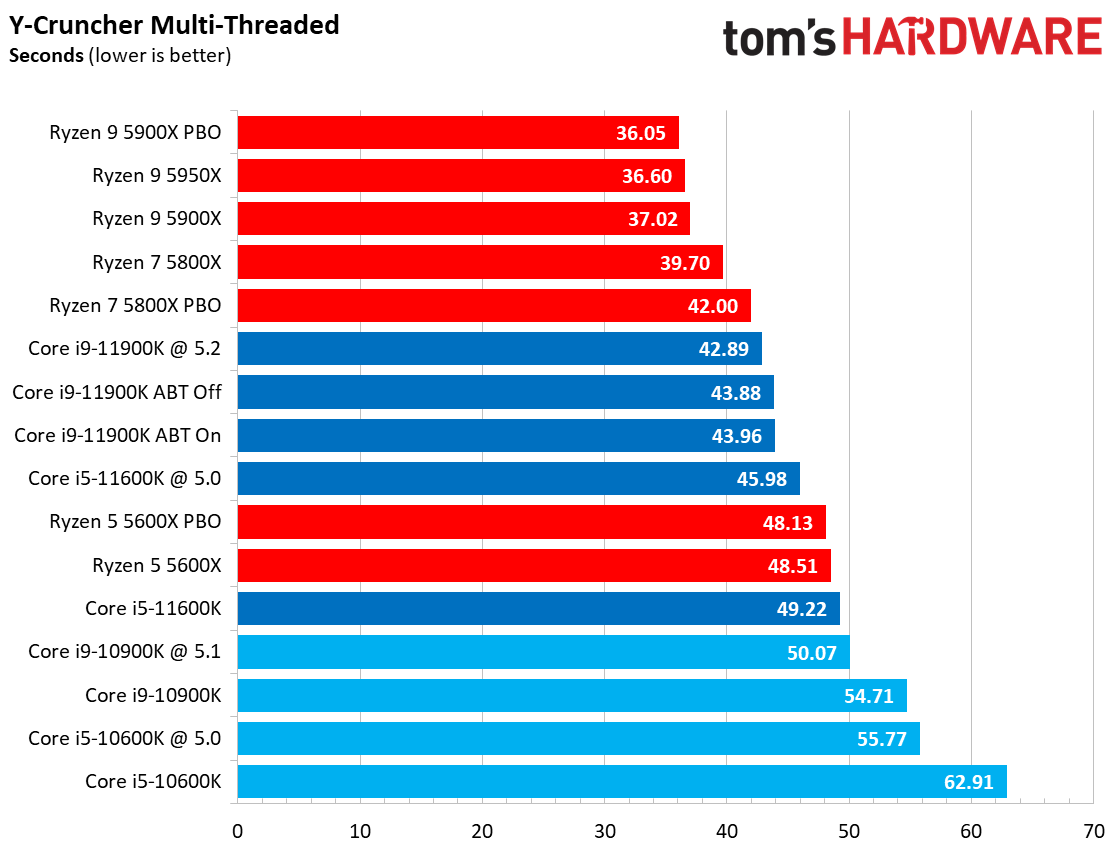
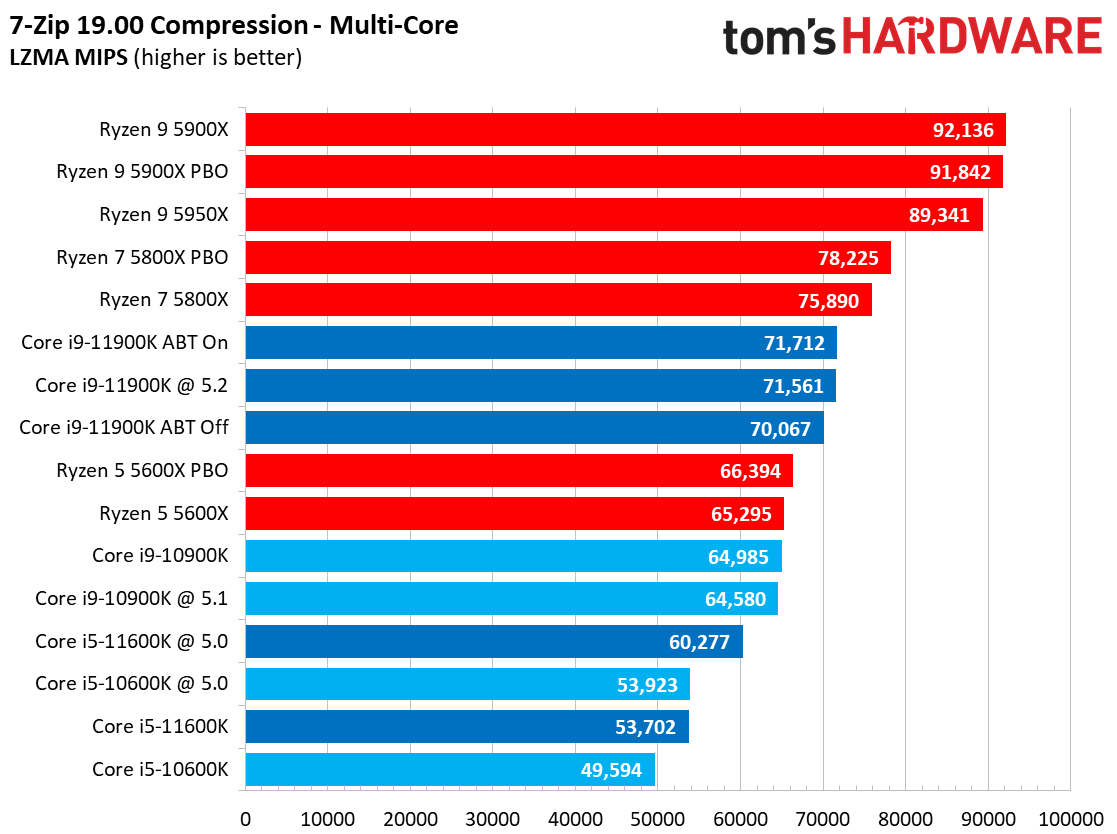
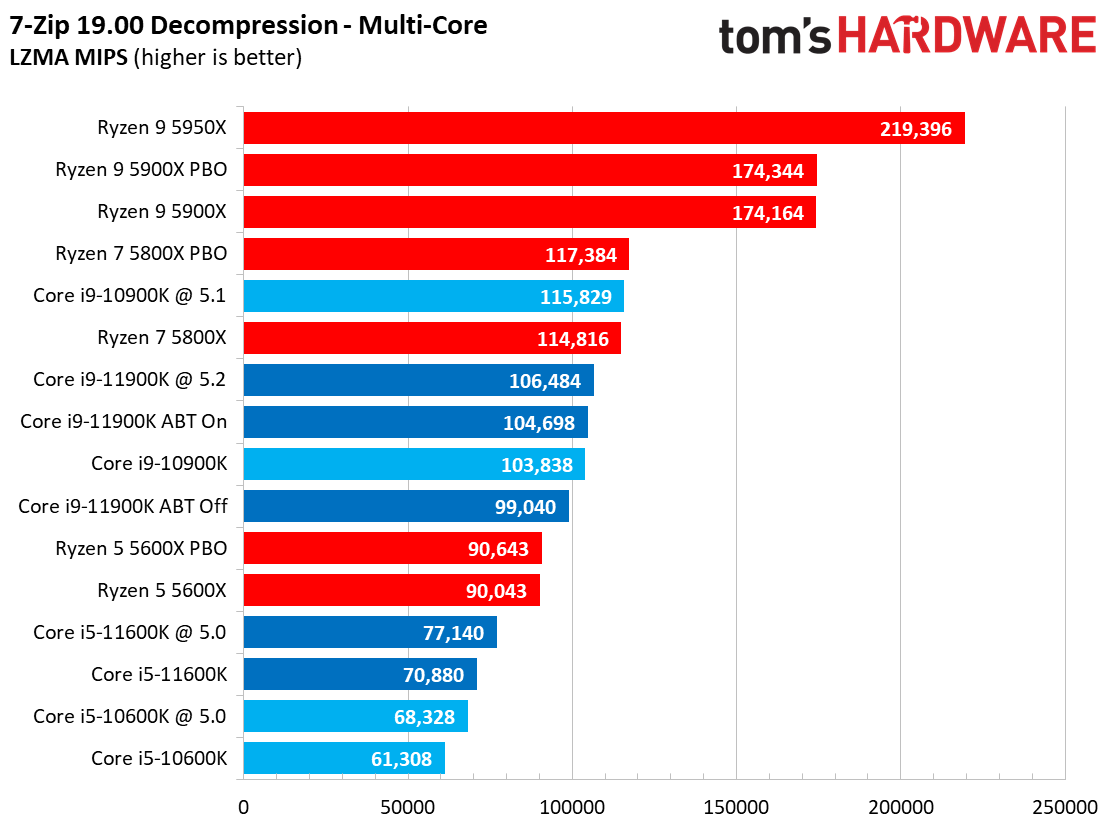
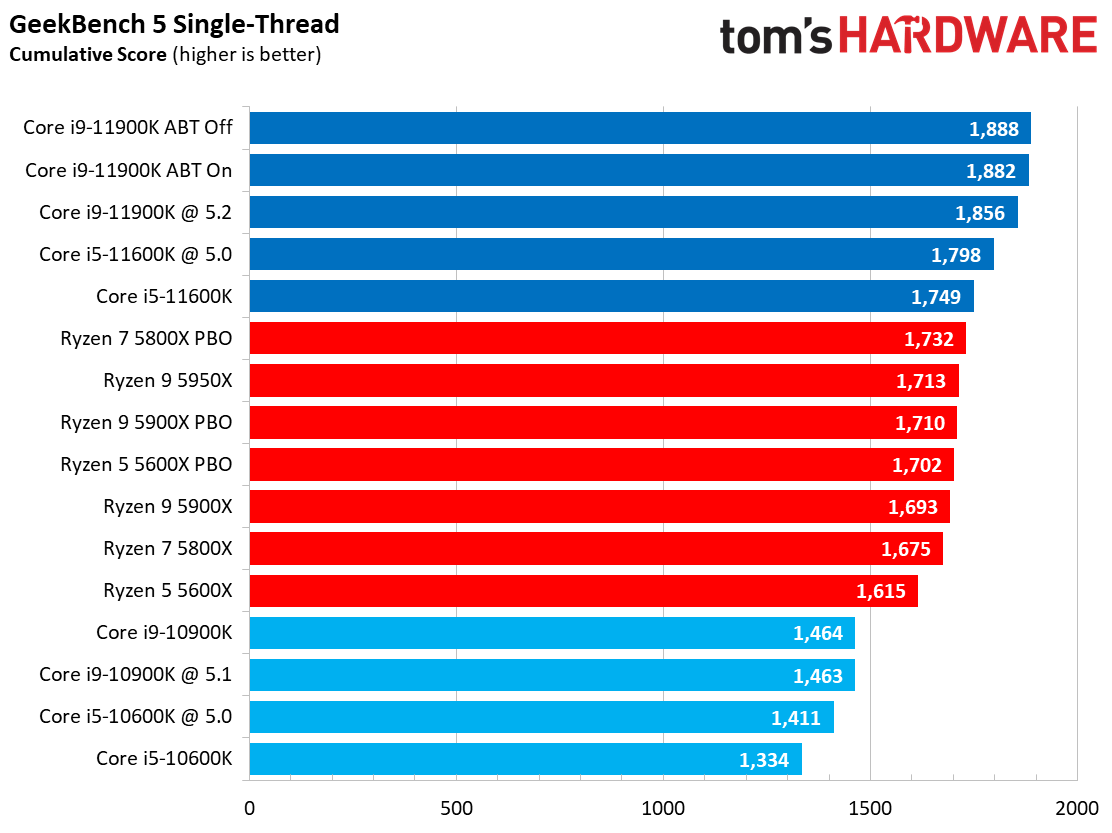
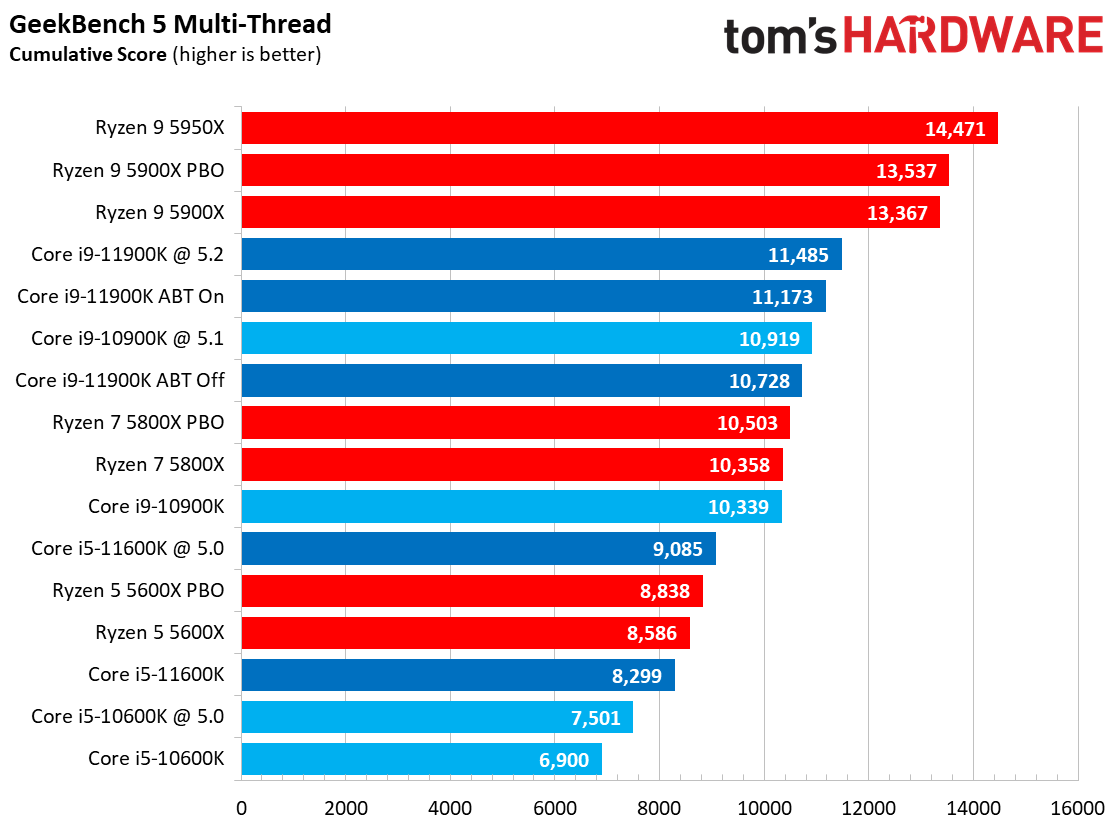
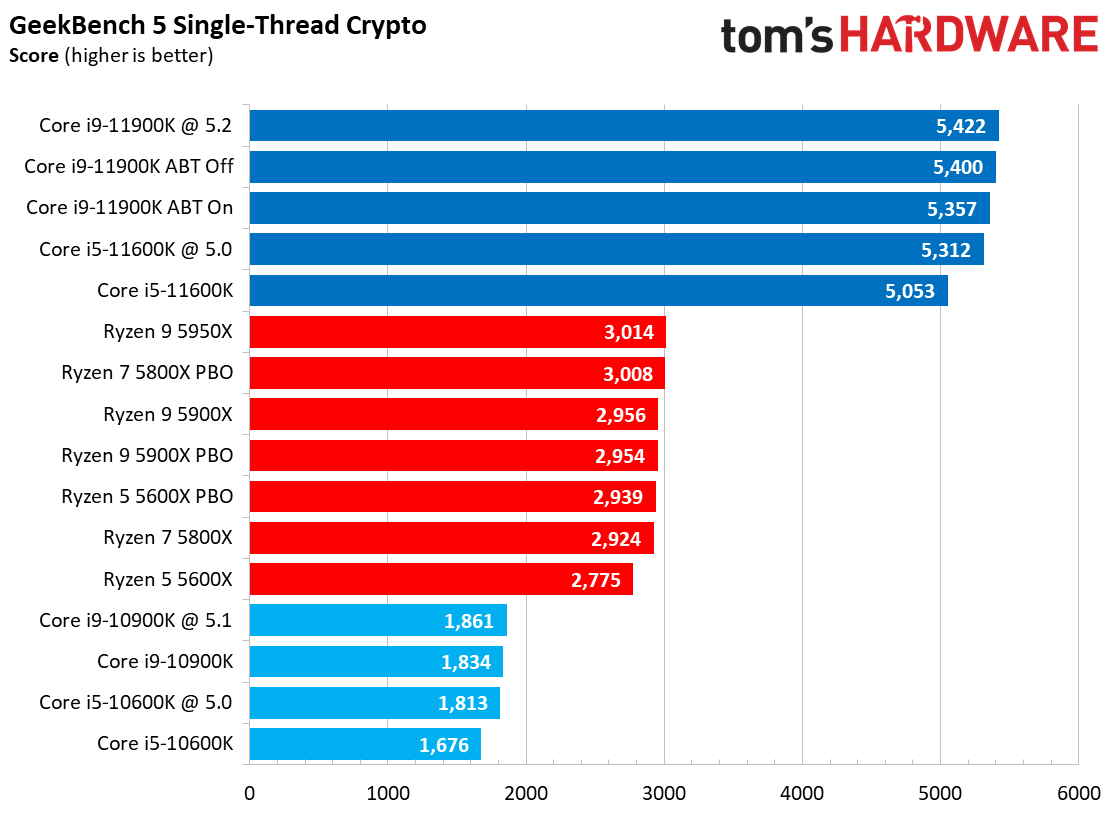
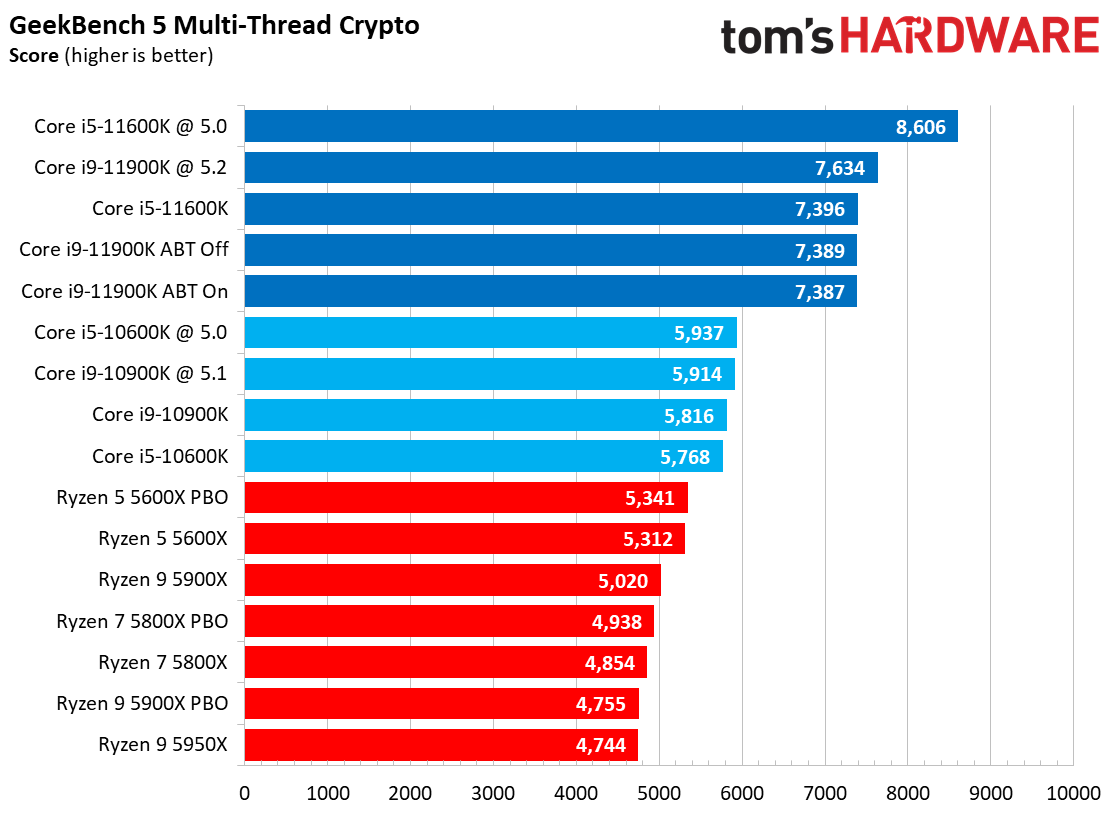
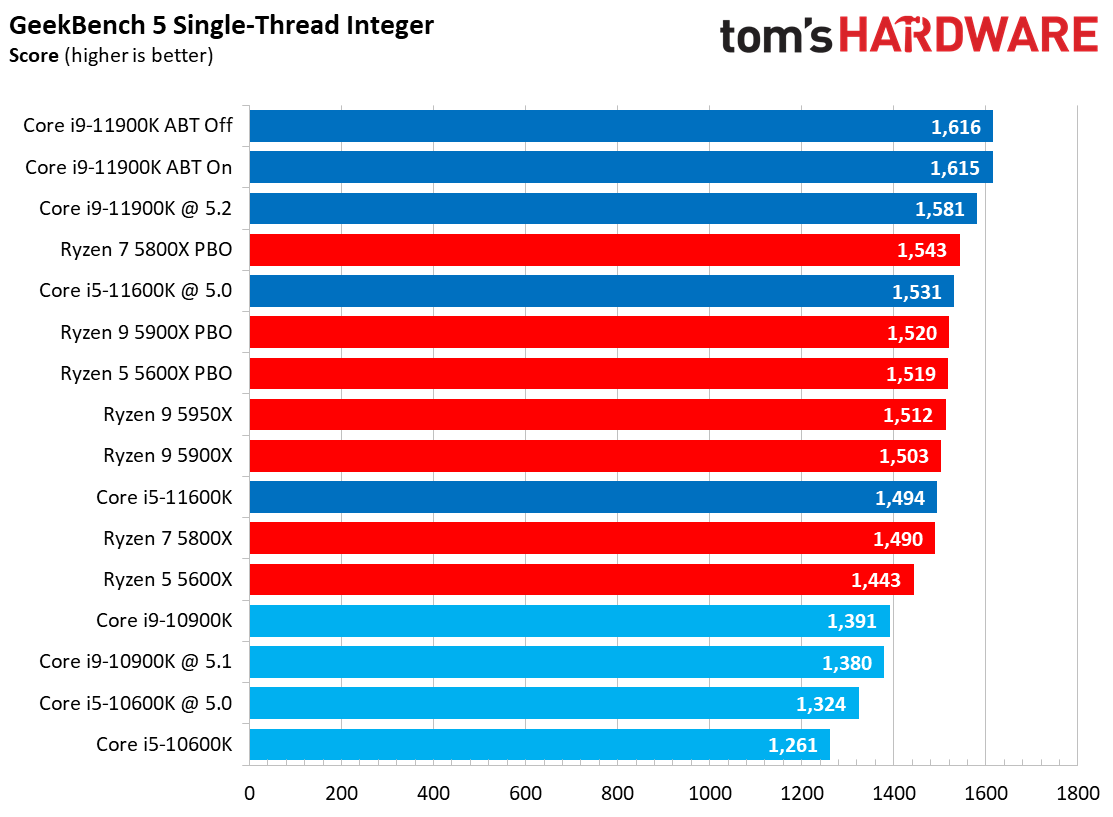
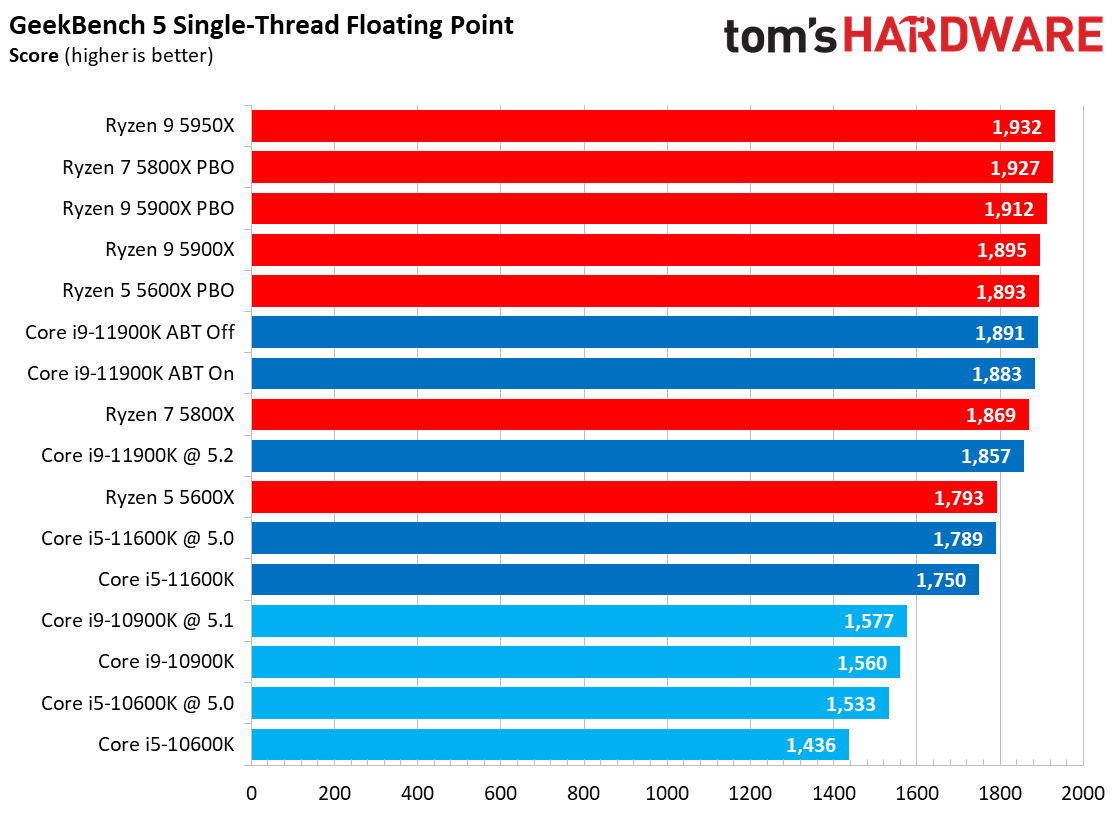
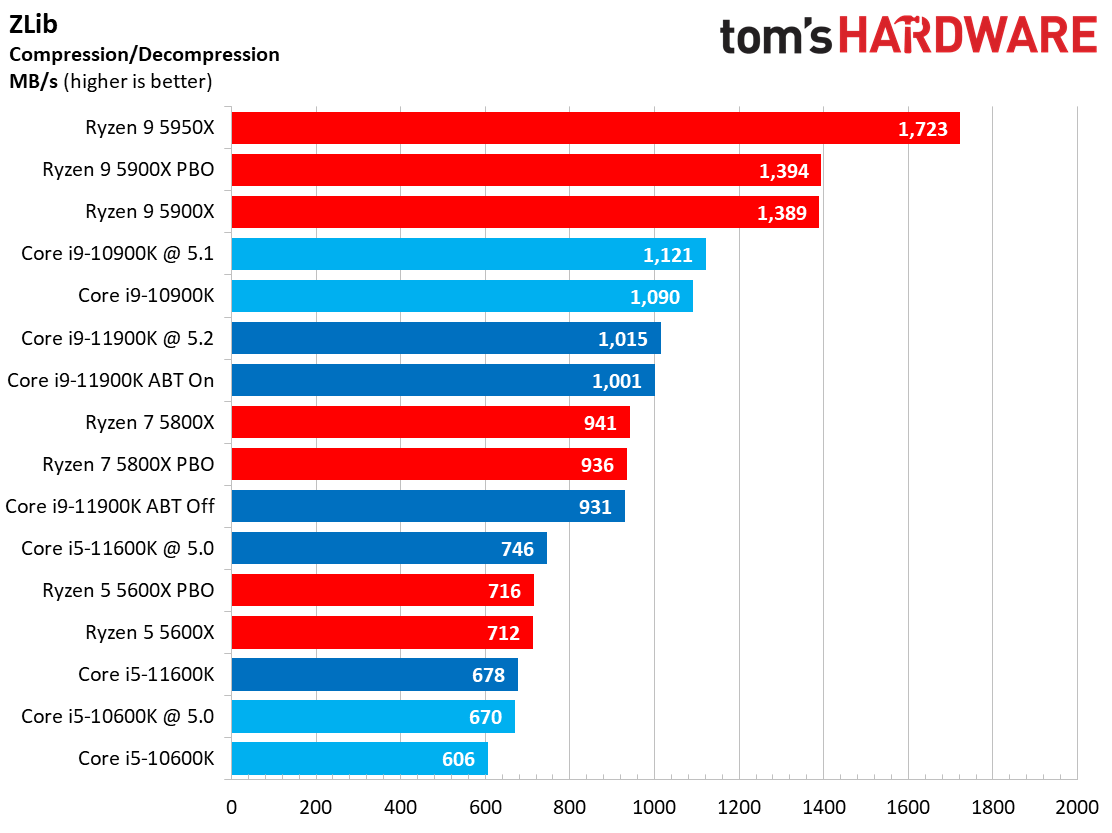
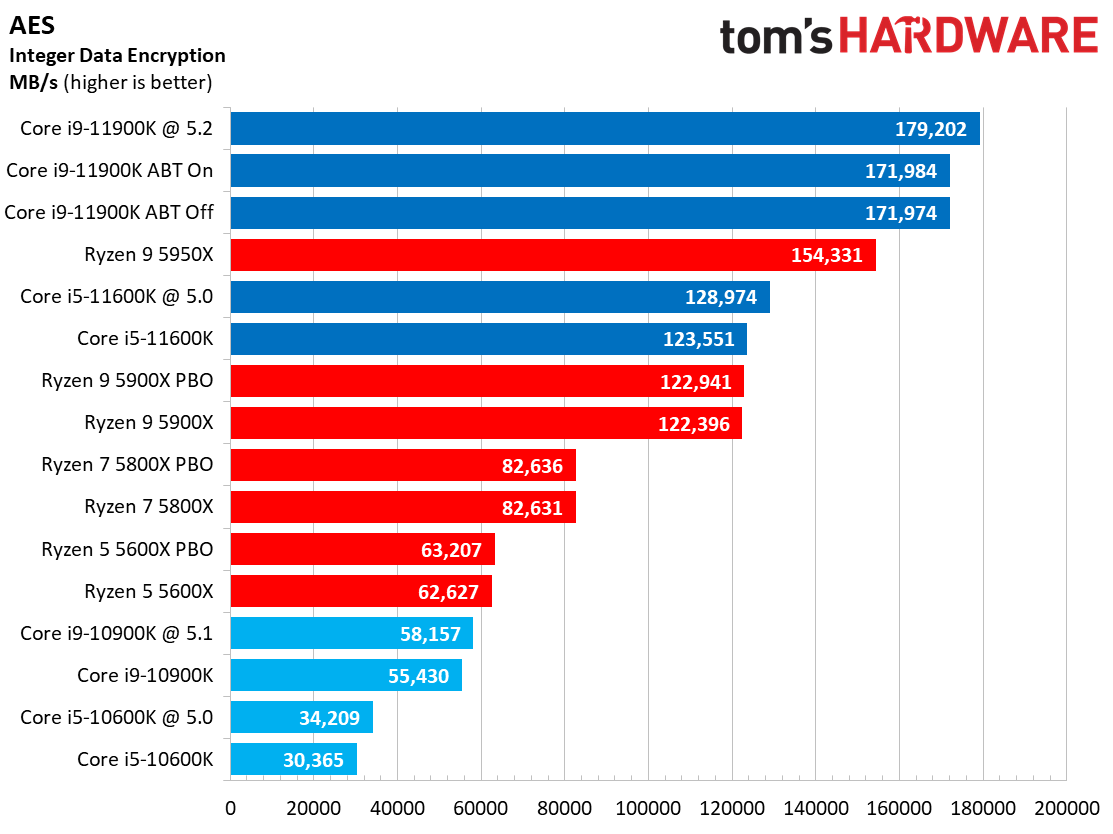
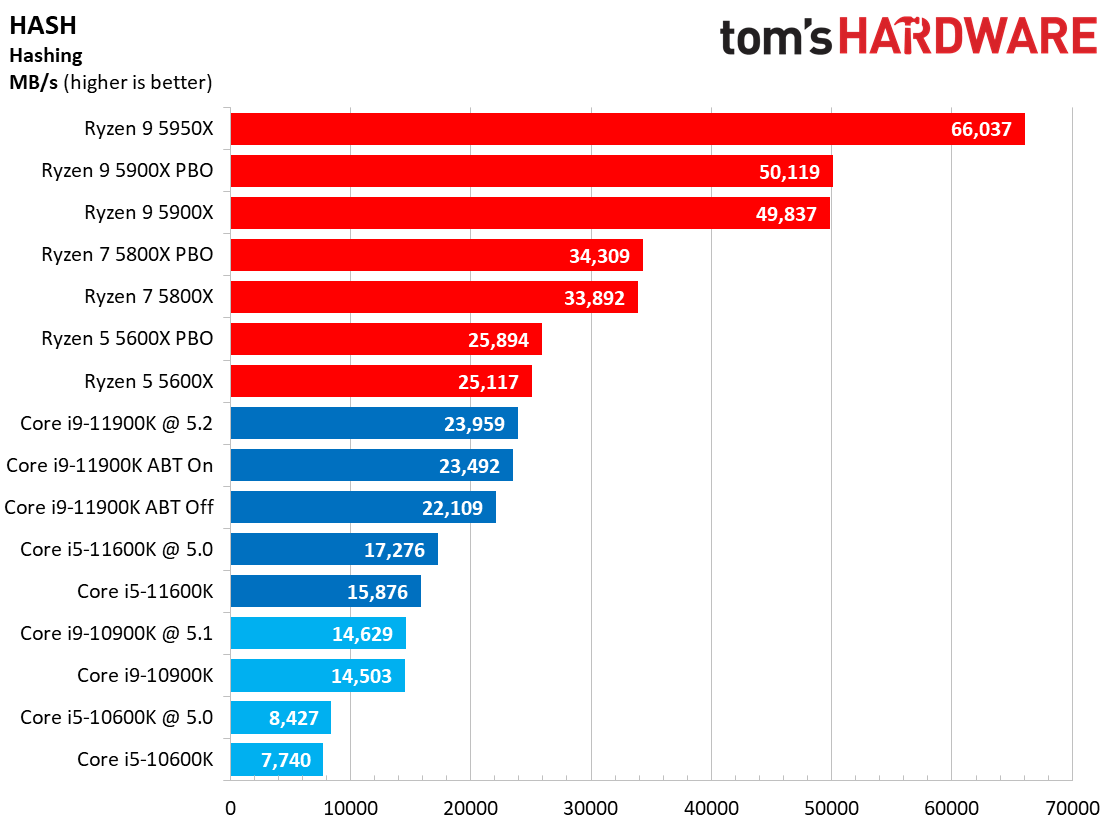
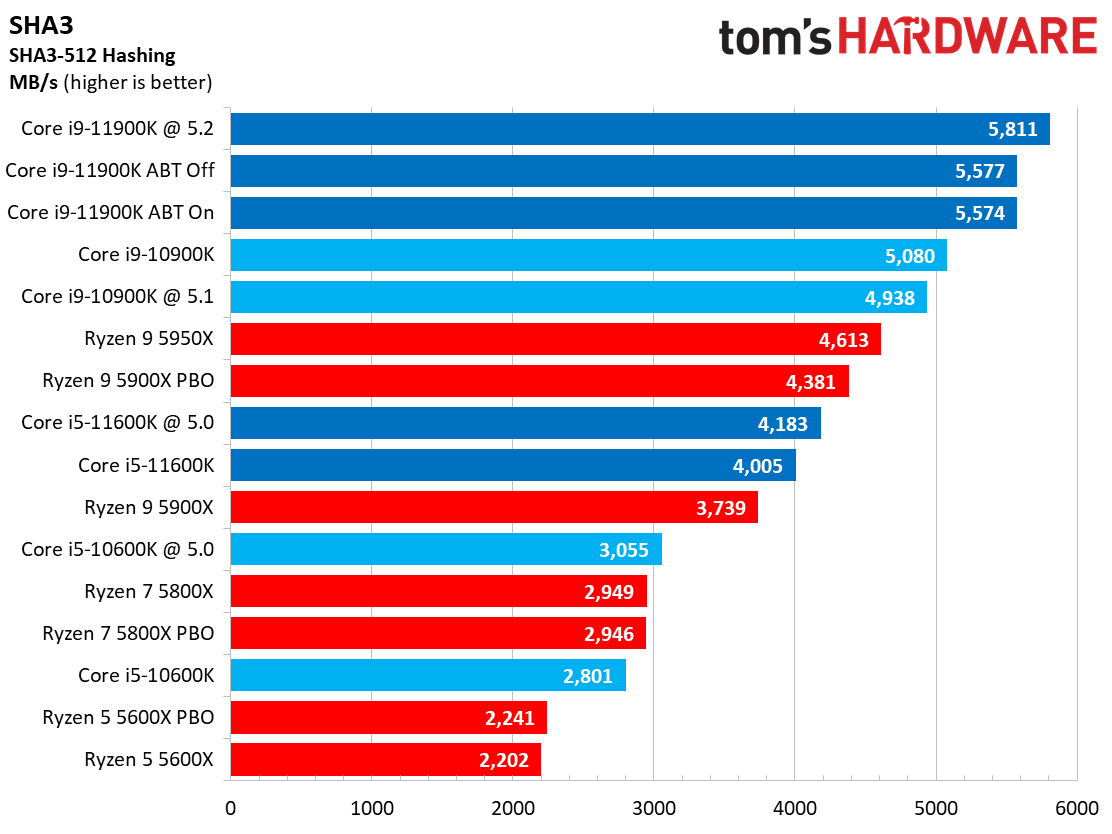
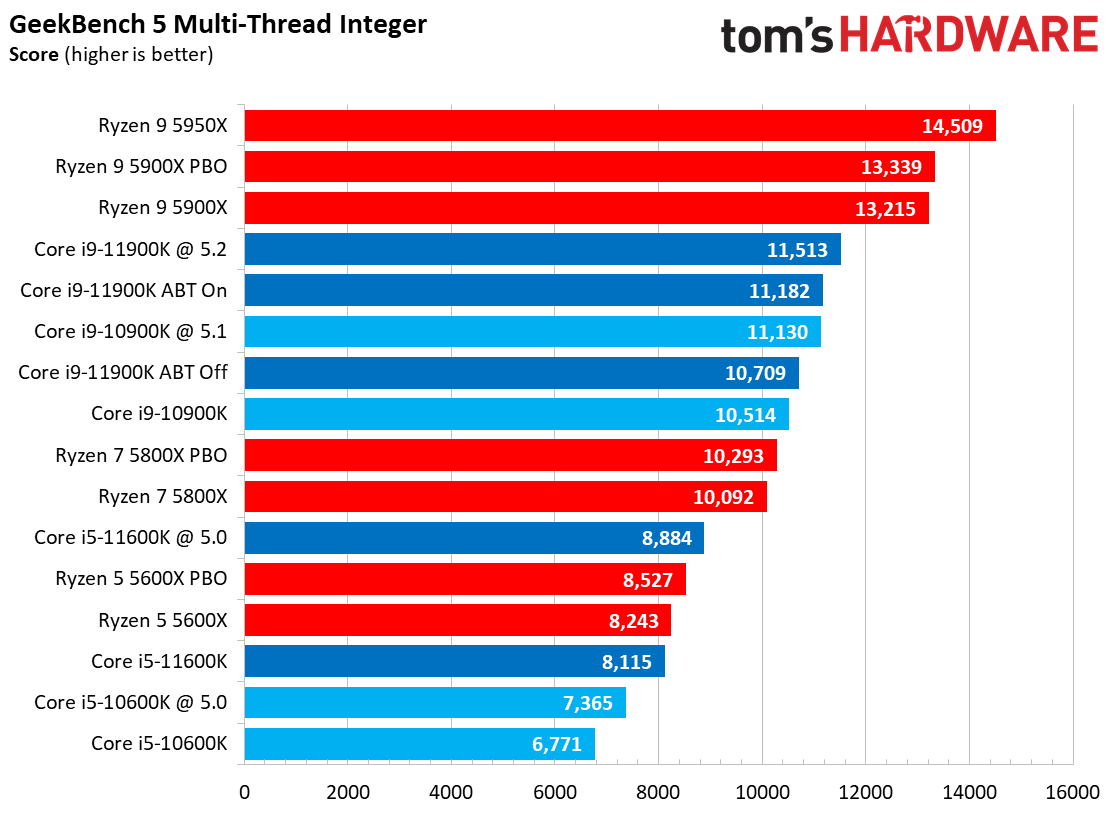
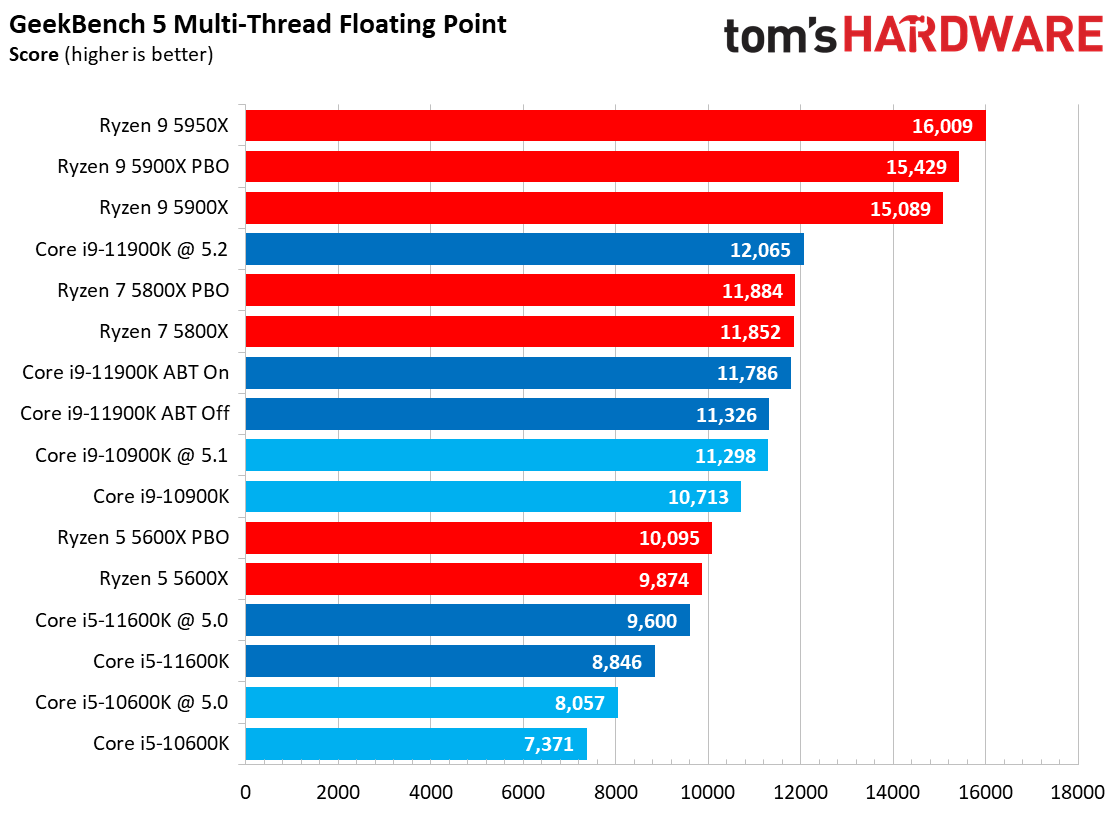
The timed LLVM compilation workload finds the Core i9-11900K once again struggling to match its previous-gen counterpart the 10900K, albeit not by substantial margins. We see that same trend emerge again in the NAMD tests.
Our y-cruncher tests are very interesting. This AVX-512 enabled benchmark yields tremendous generational performance gains in the single-threaded test, but performance doesn't scale as well to multiple cores. The densely-packed instructions press the Rocket Lake chips to the edges of their power envelope, which likely results in limited scaling.
MORE: Best CPUs
MORE: CPU Benchmarks Hierarchy
MORE: All CPUs Content
Current page: Intel Core i9-11900K and Core i5-11600K Application Benchmarks
Prev Page Core i9-11900K and Core i5-11600K Gaming Benchmarks Next Page Intel Core i9-11900K and Core i5-11600K Abode, SPEC Workstation 3, SPECviewperf 2020 Benchmarks
Paul Alcorn is the Editor-in-Chief for Tom's Hardware US. He also writes news and reviews on CPUs, storage, and enterprise hardware.
-
Zacca You have forgotten to post SolidWorks graphs. And Creo is wrongly posted in the Workstation stackReply -
Zacca ReplyAdmin said:We put the Core i9-11900K and Core i5-11600K to the test in our gaming and application benchmarks.
Intel Core i9-11900K and Core i5-11600K Review: Rocket Lake Blasts Off : Read more
Once again, please add the missing SolidWorks graphs to the SPECviewperf 2020 benchmark image stack. Also Creo is miss placed.
